- Custom Tillers

Handcrafted sailboat tillers
Order by boat model or custom size. Any style can be built by providing a few simple dimensions.
Welcome Sailors!
THIS IS THE HOME OF WOOD SAILBOAT TILLERS. WE OFFER QUALITY TILLERS FOR MANY BOAT MODELS SUCH AS CATALINA, HUNTER, J-BOAT, PEARSON, AND MORE. CUSTOM TILLERS ARE ALSO AVAILABLE. OUR TILLERS ARE BEING USED AROUND THE WORLD BY ALL TYPES OF SAILING ENTHUSIASTS INCLUDING DAY SAILORS, LONG TRIP CRUISERS, AND COMPETITIVE RACERS.
REQUEST QUOTE
PRESS BUTTON BELOW TO PULL UP OUR TILLER ORDER FORM. THE FORM WILL TAKE IN ALL THE NECESSARY INFO THAT WILL BE NEEDED TO QUOTE YOUR TILLER. I WILL BE IN TOUCH SOON WITH PRICING AND TO CONFIRM DIMENSIONS. WE WILL BEGIN WORK WITH YOUR GO AHEAD.
Hi John, Thank you again! The tiller is beautiful and it is a perfect fit. Out sailing Long Island Sound. Doug Mitten-Norwalk, CT
JT, Tiller is beautiful - perhaps too much so, it puts the rest of my boat to shame. Thanks for the quick turnaround. Tom Boussie-Menlo Park, CA
You all did a beautiful job in crafting my new tiller. I am very happy with the finished product. Thank you for your craftsmanship. Frank Porpotage-Sarasota Sailing Squadron
The tiller has arrived. What wonderful craftsmanship! It is absolutely beautiful ... a work of art. Thank you. Paul E. Mottl-Crisfield, MD
The tiller has arrived . . it is absolutely beautiful . ...we are very happy . . awesome workmanship . . thanks you so much..I will install it tomorrow and then it's out sailing again... thanks again for providing such an excellent product. Tom and Kip Klidonas-Delray Beach, FL
Tiller arrived and its a beautiful work of art. Thanks. My boat will be very happy! Leighton Cooney-Auburn, ME
The tiller arrived Thursday and it is a work of art! Thanks very much for your fine workmanship. David Hulse-Chesapeake, VA
Dear JT, Thank you so much! The tiller arrived yesterday and it is gorgeous! It will stand out on this old sailboat and I'm sure it will make her sail even better. Macky Gaines-Vergennes, VT
The tiller you made is beautiful and a perfect fit. Dean Brock-Port Townsend, WA
The tiller arrived last night. It is a work of art. Thanks very much. I will recommend you to everyone I know and will send anything else I need your way. Bill Wesp-Centerport, NY
Hi JT, just letting you know I am very pleased with the quality of work you guys have done. I also appreciate the time you and your dad took to get the peculiar measurements precise. Dan Scheffel-Kansas City, MO
Thanks John, I know you've made my husbands Christmas very special. Linda Scheffield-Florida
John, it looks great. The craftsmanship is excellent and made in America! Perfect. Thanks again. Art Buehler
Recieved, thank you. It came out beautiful. I can't wait to get it in my fathers hands. Derek Basini-Rockville Centre, NY
It was delivered yesterday. It's perfect. Thanks so much for your work. I will recommend you to all that may need a tiller. Leslie Dietsch-Erie, MI
Good morning, the tiller arrived and it is beautiful. Jeff Brunson- Mt. Pleasant, SC
Copyright © 2018 ANY TILLER - All Rights Reserved.
Powered by GoDaddy
Cookie Policy
This website uses cookies. By continuing to use this site, you accept our use of cookies.

World Class Rudders, Tillers, and other Gear for Real Life Sailing
Sailboat rudders, sailboat tillers, custom rudders/ tillers, sailboat accessories, rudder repair worksheet, instructional handbook, looking for a product for your sailboat.
Can't Find your Sailboat?
Why Rudder Craft?
At Rudder Craft we build every sailboat rudder with the singular focus of improving your sailboat’s steering performance. In order to accomplish this our sailboat rudders incorporate a hydrofoil design, as a matter of course. Sailboats ranging from the West Wight Potter 15, all the way up to the MacGregor 36 and Catalina 42, will find a more accurate helm once a Rudder Craft hydrofoil sailboat rudder is installed.
Why Hydrofoil?
Operating on principles similar to airplane wings, the foiled sailboat rudder design generates lift as the sailboat makes way. By employing the sailboat rudder to reduce drag, and increasing the force the sailboat rudder is able to exert, any sailboat will find themselves performing better: weather helm is reduced, tacking is crisper, points of sail are easier to keep, and helm effort is greatly reduced in light and moderate air.
Why Use a Kick-up Rudder?
Subscribe to our blog.
Join our mailing list to receive the latest news and updates from our team.
You have Successfully Subscribed!
No results found.
The page you requested could not be found. Try refining your search, or use the navigation above to locate the post.
Blog Coming Soon!
Customer reviews.

Please verify you are a human
Access to this page has been denied because we believe you are using automation tools to browse the website.
This may happen as a result of the following:
- Javascript is disabled or blocked by an extension (ad blockers for example)
- Your browser does not support cookies
Please make sure that Javascript and cookies are enabled on your browser and that you are not blocking them from loading.
Reference ID: 9f9e3bb7-e6e3-11ee-a19a-904cf6374a59
Powered by PerimeterX , Inc.
Sailboat Tiller: A Comprehensive Guide to Steering Your Vessel
by Emma Sullivan | Jul 18, 2023 | Sailboat Maintenance
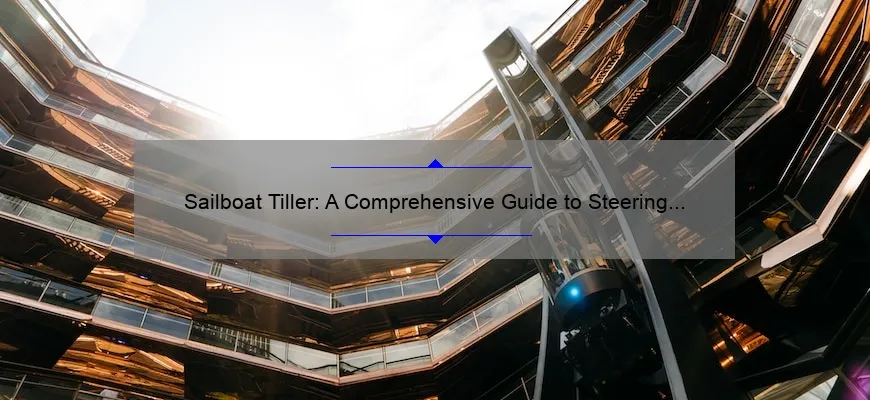
Short answer sailboat tiller:
A sailboat tiller is a lever used to steer a sailboat by connecting it to the rudder. It allows the sailor to control the direction of the boat by manipulating the position of the tiller. This essential component provides direct and manual steering control, commonly found on smaller sailing vessels.
Introduction to Sailboat Tiller: Everything You Need to Know
Are you looking to set sail on a thrilling nautical adventure? If so, then understanding the intricacies of a sailboat tiller is of vital importance. A sailboat tiller serves as the vessel’s steering mechanism, connecting the skipper to the boat’s rudder and allowing for smooth navigation through strong winds and turbulent waters. In this comprehensive guide, we will delve deep into all things related to sailboat tillers – from their history and construction to their proper usage and maintenance.
A Brief History
The concept of using a tiller as a means of steering can be traced back centuries. Dating back to ancient times, civilizations such as Mediterranean Greeks and Phoenicians utilized primitive forms of tillers made from sturdy pieces of wood or bamboo. These early sailors understood that controlling their vessels’ direction was essential for survival during long voyages across vast oceans.
Over time, advancements in technology allowed for the refinement of sailboat tillers. During the medieval era, sailors began incorporating more sophisticated mechanisms like pivoting mounts and connections between the rudder and tiller. By the 17th century, wooden rudders became prevalent, with oak being favored due to its strength and durability.
Construction and Components
Modern-day sailboat tillers typically come in two primary materials: wood or lightweight composites like fiberglass or carbon fiber. Wooden tillers offer timeless beauty while maintaining sturdiness but require regular maintenance to prevent weathering or rotting. On the other hand, composite materials provide enhanced durability without compromising on weight.
The main components of a sailboat tiller include:
1. Tiller Head: Located at the aft end near the cockpit area, it connects directly to the top portion of the rudder stock.
2. Tiller Extension: Attached at an angle perpendicular to the main tiller, it allows sailors to steer without having to stand right at the tiller. This is especially useful during intense maneuvers or when adjusting sails.
3. Tiller Connection Hardware: Consists of various robust hardware pieces like swivels, brackets, and bolts that help secure the tiller onto the rudder stock, ensuring a tight connection for precise steering control.
4. Tiller Rope or Bungee System: Sailors often employ a rope or bungee system to maintain tension on the tiller while sailing upwind or in gusty conditions. This ensures that the tiller stays in place, reducing strain on the skipper.
Proper Usage and Techniques
Mastering sailboat tiller control requires practice and understanding of proper techniques. When holding the tiller, it is essential to have a relaxed grip allowing for ease of movement while maintaining full control over steering adjustments. Remember to always face forward with both feet firmly planted on deck for stability and balance.
To turn left (port side), push the tiller away from yourself; conversely, pulling it towards you will result in a right turn (starboard side). Understanding how different movements affect your vessel’s course – whether large distinct turns or subtle adjustments – is vital for navigating through confined spaces such as marinas.
Maintenance Tips
Ensuring your sailboat tiller remains in excellent condition requires regular maintenance and care:
1. Inspection: Routinely check for any signs of wear or damage on the tiller head, extension, connections hardware, or rope/bungee system. Address any issues immediately to prevent further deterioration.
2.Cleaning: Depending on its material (wood or composite), clean your sailboat’s tiller using appropriate methods and products. Wooden tillers may benefit from occasional sanding and revarnishing to maintain their aesthetic appeal and structural integrity.
3.Storage: Properly store your sailboat’s tiller when not in use to protect it from harsh weather conditions that could lead to warping or cracking. A protective cover can be employed for added safeguarding.
A sailboat tiller is the fundamental connection between you, the sailor, and your vessel’s ability to navigate through treacherous waters and gusty winds with precision. By understanding the history, construction, usage techniques, and maintenance tips associated with sailboat tillers, you can embark on unforgettable maritime adventures with confidence and finesse. So hoist those sails, grab hold of that tiller, and let your sailing dreams set sail!
How to Use a Sailboat Tiller: A Step-by-Step Guide for Beginners
Ahoy, landlubbers! Are you ready to set sail on the open seas and experience the thrill of sailing? Well, before you hoist those sails and catch the wind’s whisper, it’s crucial to familiarize yourself with the most important tool at your disposal: the sailboat tiller.
The sailboat tiller is like a captain’s rudder, steering you towards new horizons and adventures. This essential piece of equipment controls the movement of your sailboat and allows you to navigate through the water with confidence. But fear not! Using a sailboat tiller is simpler than tying a sailor’s knot.
Step 1: Feel the Tiller in Your Hands When gripping the tiller, you’ll notice its smooth wooden or metal surface beneath your fingers. Embrace this connection between man and machine – for it is through this tangible bond that you’ll commandeer your vessel. Take a moment to savor this kinship before moving on.
Step 2: Stand Tall at Stern Now that you’ve acquainted yourself with your trusty companion, navigate towards the stern (the back) of your sailboat. It is from this vantage point that you’ll exert your authority over wind and waves.
Step 3: Assess Your Surroundings Before maneuvering the tiller, survey your surroundings like an experienced seafarer. Keep an eye out for other boats bobbing nearby, any pesky shallows lurking beneath calm waters, or any potential obstacles that could disrupt an otherwise majestic voyage.
Step 4: Push or Pull? Once confident in your surroundings, endeavor to establish whether pushing or pulling will determine your ship’s course. When nearing crew members who are eagerly awaiting their chance at assisting with navigation duties (or simply hoping for direction), please refrain from poking them with the tiller-end. Remember, camaraderie is key!
Step 5: Master the Art of Gentle Steering With your intentions clear and your path charted, it’s time to put theory into practice. Begin by gently moving the tiller in the desired direction, as an accomplished captain would steer her ship through stormy seas. Avoid rash movements that may jolt passengers or cause them to spill their noble cups of tea – a trait becoming of any seasoned sailor.
Step 6: The Wind Holds All Secrets As you gain confidence in steering with finesse, take note of the wind’s whispers as they dance through the sails. As if engaged in a secret dialogue with nature itself, learn to interpret its messages and adjust your course accordingly. Become one with these gusts of fortune, and you will undoubtedly become a master sailor.
Step 7: Embrace Trial and Error Remember that Rome wasn’t built in a day, just as skillful seamanship isn’t acquired overnight. Be open to making mistakes and learning from them in true nautical spirit. Practice makes perfect – or at least gets you closer to it!
So there you have it, future sailors! With this step-by-step guide on using a sailboat tiller, you now possess the knowledge needed to embark on your seafaring adventures. May your voyages be filled with calm breezes and breathtaking sunsets that leave even Poseidon himself envious!
Common Sailboat Tiller FAQs Answered: Your Ultimate Resource
Are you a sailing enthusiast who has many burning questions about sailboat tillers? Look no further! In this comprehensive blog post, we will dive into the most common sailboat tiller FAQs and provide you with all the answers you need. Consider this your ultimate resource for all things sailboat tillers!
1. What is a sailboat tiller?
Let’s start with the basics. A sailboat tiller is a mechanism used to steer a sailboat. It is usually a long handle attached to the rudder or directly connected to it, allowing sailors to control the direction of their boat.
2. How does a sailboat tiller work?
A sailboat tiller works by transmitting the force applied by the sailor to the rudder, which then changes the direction of the boat. When you push or pull on the tiller handle, it moves in one direction or another, causing the rudder to move accordingly and alter your boat’s course.
3. What are some advantages of using a sailboat tiller instead of a wheel?
Ah, an excellent question! Using a sailboat tiller has several advantages over using a wheel. First and foremost, one can have better feel and feedback when steering with a tiller. This allows for more precise control and maneuverability in challenging conditions.
Moreover, tillers are generally considered simpler and require fewer moving parts than wheels. This simplicity translates into easier maintenance and potential cost savings.
4. Are there different types of sailboat tillers?
Yes indeed! Sailboat tillers come in various types depending on their design and construction materials. The most common types include wooden tillers (often made from teak or ash), fiberglass composite reinforced ones (more lightweight), carbon fiber (high performance), and stainless steel variants (durable but less common).
5. How long should my sailboat’s tiller be?
The length of your sailboat’s tiller depends on several factors, such as the size of your boat and personal preference. As a general guideline, tillers for smaller sailboats tend to be shorter, usually between 24 and 36 inches. Larger boats may require longer tillers to provide enough leverage and control.
6. Can I upgrade or modify my sailboat’s tiller?
Absolutely! Sailboat tillers can be customized to fit your specific needs and preferences. Some sailors opt for ergonomic handles for added comfort, while others may choose to extend or shorten the tiller based on their sailing style. Just remember that any modifications should maintain the structural integrity of the tiller and not compromise its functionality.
7. How do I best maintain my sailboat’s tiller?
Maintaining your sailboat’s tiller is crucial for its longevity and performance. Ensure regular inspections for cracks, splits, or signs of wear and tear in wooden or composite tillers. For wooden versions, applying a protective finish like varnish can help prevent water damage.
Keep all moving parts lubricated and check for any loose connections if you have a removable tiller extension system in place. Cleaning regularly with mild soap and warm water will keep it looking its best.
There you have it – comprehensive answers to some of the most common sailboat tiller FAQs! Armed with this newfound knowledge, you’re now equipped to conquer the waters with confidence. So hoist those sails high and steer your way towards sailing success using your trusty sailboat tiller!
Essential Tips and Techniques for Handling a Sailboat Tiller
Handling a sailboat tiller requires finesse, skill, and an understanding of the nuances of sailing. Whether you are a seasoned sailor or a beginner, mastering your handling techniques is crucial for navigating smoothly through the waters. In this blog post, we will explore some essential tips and techniques to help you become an expert in sailboat tiller handling.
1. Understand the basics: Before diving into advanced techniques, it’s important to familiarize yourself with the basic principles of sailing. Understanding concepts such as wind direction, sail trim, and rudder control will lay a solid foundation for your tiller handling skills.
2. Maintain a relaxed grip: Many sailors tend to hold the tiller too tightly out of fear of losing control. However, this can lead to overcorrections and jerky movements. Instead, strive to maintain a relaxed grip on the tiller handle – imagine holding a bird that you don’t want to scare away.
3. Use subtle movements: Contrary to popular belief, steering a sailboat should not involve aggressive or forceful movements. Instead, focus on making small adjustments by gently moving the tiller left or right. Subtle inputs allow for better control and responsiveness while maintaining stability.
4. Adapt to changing conditions: Sailing conditions can vary greatly from calm seas to gusty winds. As such, it’s crucial to adapt your tiller handling accordingly. During light winds or flat water conditions, use smooth motions and gentle touches for precise steering. In contrast, when faced with strong winds or choppy seas, be prepared to apply more force while keeping your movements controlled.
5. Stay balanced: Maintaining balance is key when it comes to successful tiller handling. Be mindful of how your body weight transfers as you steer – leaning too far in any direction can affect your boat’s stability and maneuverability.
6.Trust your senses: While it’s important to pay attention to instruments like wind indicators and boat speed, relying solely on these can compromise your ability to feel the boat’s response. Trust your senses – the sound of the wind, the tension in the sails, and the way the water moves around your rudder. This connection will help you anticipate changes and make adjustments intuitively.
7. Practice makes perfect: Becoming proficient in sailboat tiller handling requires practice! Head out on the water as much as possible to refine your skills. Experiment with different techniques, challenge yourself by sailing in various conditions, and seek feedback from experienced sailors. Remember that being a master at tiller handling is a continuous learning process.
In conclusion, mastering sailboat tiller handling involves finesse, adaptability, and practice. By understanding the basics and employing subtle movements while maintaining balance, you can confidently navigate through any sailing condition. Trust your instincts and let your senses guide you towards becoming an expert in sailboat tiller handling. So hoist those sails and set off on a path to mastering one of sailing’s most essential skills!
The Advantages of Using a Sailboat Tiller: Why You Should Consider it
Title: The Advantages of Using a Sailboat Tiller: Why You Should Consider it
Introduction: Embracing the age-old tradition of sailing has always been a captivating choice for adventurers, nature enthusiasts, and even those seeking an escape from the chaos of modern life. While advancements in technology have introduced various steering mechanisms over the years, the classic sailboat tiller remains a beloved and timeless option. In this blog post, we delve into why using a sailboat tiller carries numerous advantages that make it an appealing choice for sailors of all levels.
1. Connection with your Vessel: One of the most enchanting aspects of sailing is establishing a profound connection with your boat and the elements around you. By utilizing a sailboat tiller, you are granted an irreplaceable physical connection to effortlessly navigate your vessel through wind and waves. It’s as if your movements become one with the boat’s response, allowing you to hone your sailing skills while feeling every gust personally. This intimate relationship between sailor and craft fosters unparalleled confidence and control on the water.
2. Enhanced Maneuverability: Unlike mechanical systems such as wheels or electronic controls, sailboat tillers offer superior sensitivity for navigating waters both tranquil and tempestuous alike. With even the subtlest touch on a properly balanced tiller, you can instantly determine changes in direction or course adjustments. This responsiveness enables nimble maneuverability, essential when navigating tight channels or evading potential obstacles swiftly. Feel like an oceanic acrobat as you effortlessly pivot through sharp turns or gracefully glide through narrow passages – all thanks to your trusty sailboat tiller.
3. Simplicity is Key: In a world often dominated by complex technologies, embracing simplicity can be truly refreshing – enter the humble yet reliable sailboat tiller. Its straightforward construction means minimal maintenance requirements compared to intricate wheel-based controls or motorized alternatives that may suffer electrical failures at inconvenient times. With a sailboat tiller, you can wave goodbye to unexpected technological glitches and focus on enjoying the timeless art of sailing.
4. Cost-Effective Solution: Whether you are a seasoned sailor or just embarking on your nautical journey, managing expenses is always a consideration. Opting for a sailboat tiller proves advantageous in terms of cost-effectiveness. The simplicity of this steering mechanism translates into fewer parts that can break or wear out, reducing repair and replacement costs significantly. Additionally, due to its durability and minimal upkeep needs, investing in a high-quality sailboat tiller ensures long-term savings while maintaining the authentic sailing experience.
5. Harmonious Aesthetics: Beyond practicality, aesthetics play an undeniable role in our love affair with sailboats. The elegantly curved woodwork of a traditional tiller adds a touch of timeless charm to any vessel. Their graceful presence compliments the natural surroundings and matches perfectly with the classic vibes associated with sailing adventures. Choosing a sailboat tiller elevates not only your sailing experience but also the visual appeal of your boat – allowing you to enjoy both style and substance as you glide through picturesque horizons.
Conclusion: The enchantment lies within the simplicity – opting for a sailboat tiller unlocks numerous advantages that go beyond steering your vessel gracefully through vast oceans or serene lakes. By forging an intimate connection between sailor and boat, enhancing maneuverability, simplify maintenance routines, offering cost-effective qualities, and enriching aesthetics; the loyal companion that is the sailboat tiller truly captivates those who seek both functionality and undeniable charm when embarking upon their maritime adventures
Troubleshooting Common Issues with Your Sailboat Tiller
Title: Mastering the Art of Troubleshooting Your Sailboat Tiller with Finesse
Introduction: Sailing has always held a profound allure, empowering adventurers to embrace the vastness of the open water. Yet, every sailor knows that even the most captivating journey can be momentarily interrupted by pesky issues. In this blog post, we will delve into troubleshooting common problems that often plague sailboat tillers, equipping you with expert advice and a touch of wit, so you can navigate the waters seamlessly.
1. The Case of Unpredictable Steering: Picture this – you’re confidently sailing towards the horizon when suddenly your sailboat’s steering becomes as unpredictable as a mischievous imp! If your tiller seems to have developed a mind of its own, fear not; we’re here to help. Possible causes: – Loose Connections: Inspect all connections between your tiller and rudder for signs of looseness or wear. Make sure they are securely fastened. – Misaligned Rudder: A misaligned rudder can cause erratic steering behavior. Double-check its position using alignment marks and adjust accordingly. – Debris or Fouling: It’s not uncommon for debris like seaweed or fishing lines to become entangled around your rudder assembly. Conduct regular inspections and clear any obstructions promptly.
2. The Dreadful Wobble: A wobbly tiller can transform a serene sail into an involuntary dance routine on deck, leaving even seasoned sailors longing for stability once more. Potential solutions: – Tighten Components: Ensure that all nuts, bolts, and screws securing your tiller system are appropriately tightened – but avoid over-tightening which may restrict movement. – Seized Bushings or Bearings: If excessive play is present in your steering mechanism due to worn or seized bushings/bearings, it might be time for some maintenance. Disassemble the necessary parts and inspect them for damage. – Replace Worn Parts: Over time, regular use can take its toll on your tiller’s components. Identify any excessively worn parts and replace them to restore stability.
3. The Stubborn Squeak: Ah, the dreaded squeak – a persistent companion that’d make even the most stoic sailor cringe with annoyance. An unruly squeaky tiller can disturb tranquility on deck, but fret not – silence is just around the corner! Possible remedies: – Lubrication Magic: Applying a suitable marine lubricant to all moving parts of your tiller mechanism can work wonders in combating squeaks. Be thorough in your application but avoid over-lubricating as it could attract dirt or cause components to slip. – Inspection for Wear: A close examination of fittings, hinges, and connecting points might reveal signs of wear or corrosion that contribute to the noise. Replace damaged parts promptly.
4. The Sticky Tiller Challenge: When your tiller resists smooth movements and decides to cling onto one position like a stubborn barnacle, life at sea becomes slightly more frustrating than you bargained for. Potential solutions: – Cleaning and Greasing: Remove any accumulated dirt or salt residue from your rudder assembly and apply an appropriate grease or silicone lubricant along the contact points between moving parts. – Barnacle Busters: Inspect your rudder system for barnacles or other marine organisms clinging to it. If found, remove them diligently using suitable brushes or scrapers.
Final Thoughts: A skillful sailor knows that understanding their sailboat’s quirks is key to maintaining smooth sailing experiences amidst unpredictable seas. Armed with these troubleshooting tips and a dose of light-hearted cleverness, you’re now ready to address common problems that afflict sailboat tillers with confidence and finesse! Let nothing stand in the way of your nautical adventures!
Recent Posts

- Sailboat Gear and Equipment
- Sailboat Lifestyle
- Sailboat Maintenance
- Sailboat Racing
- Sailboat Tips and Tricks
- Sailboat Types
- Sailing Adventures
- Sailing Destinations
- Sailing Safety
- Sailing Techniques
- New Sailboats
- Sailboats 21-30ft
- Sailboats 31-35ft
- Sailboats 36-40ft
- Sailboats Over 40ft
- Sailboats Under 21feet
- used_sailboats
- Apps and Computer Programs
- Communications
- Fishfinders
- Handheld Electronics
- Plotters MFDS Rradar
- Wind, Speed & Depth Instruments
- Anchoring Mooring
- Running Rigging
- Sails Canvas
- Standing Rigging
- Diesel Engines
- Off Grid Energy
- Cleaning Waxing
- DIY Projects
- Repair, Tools & Materials
- Spare Parts
- Tools & Gadgets
- Cabin Comfort
- Ventilation
- Footwear Apparel
- Foul Weather Gear
- Mailport & PS Advisor
- Inside Practical Sailor Blog
- Activate My Web Access
- Reset Password
- Pay My Bill
- Customer Service

- Free Newsletter
- Give a Gift

How to Sell Your Boat

Cal 2-46: A Venerable Lapworth Design Brought Up to Date

Rhumb Lines: Show Highlights from Annapolis

Open Transom Pros and Cons

Leaping Into Lithium

The Importance of Sea State in Weather Planning

Do-it-yourself Electrical System Survey and Inspection

Install a Standalone Sounder Without Drilling

When Should We Retire Dyneema Stays and Running Rigging?

Rethinking MOB Prevention

Top-notch Wind Indicators

The Everlasting Multihull Trampoline

How Dangerous is Your Shore Power?

DIY survey of boat solar and wind turbine systems

What’s Involved in Setting Up a Lithium Battery System?

The Scraper-only Approach to Bottom Paint Removal

Can You Recoat Dyneema?

Gonytia Hot Knife Proves its Mettle

Where Winches Dare to Go

The Day Sailor’s First-Aid Kit

Choosing and Securing Seat Cushions

Cockpit Drains on Race Boats

Rhumb Lines: Livin’ the Wharf Rat Life

Re-sealing the Seams on Waterproof Fabrics

Safer Sailing: Add Leg Loops to Your Harness

Waxing and Polishing Your Boat

Reducing Engine Room Noise

Tricks and Tips to Forming Do-it-yourself Rigging Terminals

Marine Toilet Maintenance Tips

Learning to Live with Plastic Boat Bits
- Personal Gear & Apparel
The Many Faces of Tiller Extensions
In search of the ideal tiller extension, our tech editor puts the most popular models to the test..
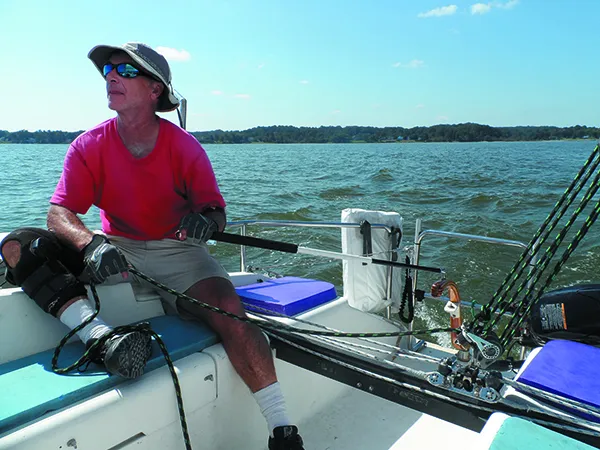
Wheel steering is all the rage, even on cruising boats under 30 feet. It looks “shippy,” holds a steady course, and makes fighting weather helm less tiring. Yet just a few decades ago a wheel would have been considered inefficient on smaller boats. It adds complexity, crowds the cockpit, and isolates the helmsman from all-important helm feel, hampering efficient windward work. Tiller steering dominates racing boats up to considerable size.
A tiller is not without downsides. In anything but a mild conditions, the helmsperson usually must sit, since there’s no comfortable handhold for support while standing. Visibility can be poor, especially if there is a high cabin or dodger, and you’re limited in your ability to move around the cockpit.
Enter the tiller extension. It frees the helmsman to move about the cockpit to tend a winch or sit up on the combing for a better view. They can move their weight to windward, if that will help, or adjust their seating position to ease back pain. On lazy days they can find a spot in the shade, and what’s wrong with that?
Picking the right tiller extension is as personal as picking shoes. It is your point of contact with the rudder, and if it’s not comfortable and responsive in both light and heavy winds, sailing performance and enjoyment will suffer. Racers are known to bring their own extension, in case they dislike the one that is fitted.
Some sailors will immediately love the extension, while others might need a trial period. A few just don’t hold up, and some were never comfortable. The most glaring failures, however, always been related to having the wrong type of extender or the wrong length—not the particular brand or model. For specific product reviews, see “Tiller Extensions: Forespar’s Cobra and Spinlock’s E-Series,” September 2000.
What We Tested
During this investigation and prior PS investigations we’ve used many styles from Forespar, Harken, Ronstan, Spinlock, and a few specialty manufacturers. Styles range for the lightest dingy wands to stout D-handled keelboat extensions, and lengths from 2 feet to 8 feet.
How We Tested.
We sailed in all sorts of weather, from sultry summer days when the extension helped us move into the shade, to survival conditions when keeping the boat upright was the main challenge. We evaluated comfort, ease of use, and durability.
Choosing the Right Style
The upsides of using an extension are obvious. Increased mobility, increased comfort, a better view, and weight to windward. But there are downsides. Picking the right stick is critical to minimizing these.
There are also downsides. If the tiller is hinged, it can lift instead of turn when you tug on the extension from your perch high on the coaming. If sitting forward you may only be able to turn a small amount before the extension-to-tiller angle becomes zero and you can’t pull the rudder any farther, perhaps a very short distance if there is strong weather helm. While pulling the tiller toward you, an extension can jam against the coaming or in the stern pulpit rails, causing loss of control.
Specific to multihulls, an extension that is long enough to reach the side deck is a compromise. While it’s nice to have extra weight to windward, you’re a long way from the sail trim controls. With a full crew, staying near the sheets is less important. Shorthanded, however, the ability to quickly ease a sheet or make small tweaks may be more important than getting your weight outboard.
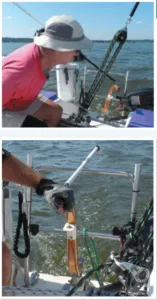
Using an extension adds one more element to tacking, either a nuisance or a benefit, depending on how it is handled. Like most things sailing, there is no single best way, only trends within certain geometries. For dinghies, there are many excellent boat-specific videos online. For the rest of us, there are these general rules:
If the tiller and helmsman are in front of the traveler, start the tack holding the extension in the same hand as before the tack in a dagger grip. Facing forward, push the tiller across. As soon as the rudder is hard over, pass the extension across forward, being careful not to mow down your crew. Alternatively, you can wait until near the end of the tack, but soon after the start seems less hectic.
If the tiller and helmsman are behind the traveler, proceed as above but using a golf grip and passing the extension aft. The extension may also be passed in a more vertical position, since it may be behind the boom.
If the tiller is behind the traveler and the helmsman is in front of the traveler (common on smaller multihulls), hold the extension in the aft hand with a golf grip, face aft, passing the extension behind the mainsheet just as the tack begins, preferably before the rudder is hard over since this results in a shorter arm reach.
If the extension is long it is very helpful to hold it vertically, close behind the boom (see photo); this reduces the weight and makes for an easy pass. As you move across, switch hands and sit down on the new side. Somewhere in that process you pass the mainsheet from hand-to-hand.
Because you are reaching around the mainsheet tackle, this won’t work for jibing unless the traveler is centered and fixed. To jibe, either center the traveler, park the extension in a holder, or pass the extension before the jibe begins. You don’t want to be reaching around the mainsheet during the jibe. The best practice is generally to park the extension and use the tiller directly.
If the extension is very long (as with some trimarans) twin extensions can be used. The unused extension is typically kept in position along the rail by light bungee cords. It must be long enough not to jam on something when pulled inboard and then back out, but not so long as to drag in the water.
If it seems like there’s too much going on, park the extension during tacks and jibes.
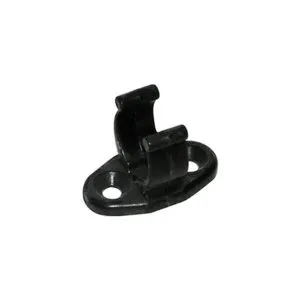
A Place to Park
There will be times when you want to put the extension down and just steer with the tiller.
Do not simply drop the extension. Except for the lightest dinghy sticks with polymer hinges, which stand straight up when released, the extension will jam against something, locking the helm at the worst moment. Dropped overboard it will drag in the water and be difficult to recover.
Our Stiletto 27 had a cradle on the tiller cross arm where it could be rested when not in use (see photo this page). Many sailors add a boat hook clip to the top of the tiller, about 1-foot aft of the pivot, and clip it there. On our Corsair F-24, we added horns to the stern rail, providing a safe resting place for even our 8-foot extension.
There are also times when a tiller pilot or tiller lock is the better answer. A tiller extension does not allow you to move everywhere or use both hands. A tiller extension lock box, in combination with an adjustable extension, is sometimes heralded as a tiller lock and auto-pilot substitute.
In our experience, these are useful for preventing the rudder from flopping around at anchor but are not for holding course; they are just too fiddly to adjust. See “ Tiller Taming with Two Fingers ,” Practical Sailor , December 2014. As for tiller pilots, I’ve had Raymarine ST2000s on two boats and liked them. Renowned West Coast sailor Skip Allan reported on these in the June 2009 issue of Practical Sailor .
Dagger vs. Golf Grip
You can grasp the extension either as a dagger (palm under the extension) or as a golf club (fingers under the extension). Both approaches have adherents and often the choice depends on the boat. Each require learning certain habits.
- Dagger grip. This grip is helpful if you sit well aft, for small boats, and if the coaming is high. The cross-chest motion is extremely responsive and the butt of the extension won’t jam against the coaming. The neutral wrist position is comfortable.
- Golf grip. This is grip good for beach cats because it is more comfortable with long extensions. It works well on boats without coamings or seat backs, where it can rest on the seat. It is handy when moving farther forward, since it keeps the direction of pull at a greater angle to the tiller. Your wrist is constantly flexed, which can be irritating if you have wrist or hand problems.
Sometimes making your own extension is the best solution to steering challenges on tiller-steered boats.
The steering arm can be solid wood, or tubing—usually aluminum or carbon fiber. The hinges are available from many sources. Your main decision is whether you want the extension to be easily removable.
If you just want an over-the-counter version, then refer to the Value Guide on page 18 for our ratings. If you are not sure what you want, the normal response is, “I’ll get an adjustable extension.”
However, most of the extensions you see on race boats or larger boats are fixed length. It is no mystery why. They are lighter than adjustable extensions, smooth to handle, harder to break, and won’t slip under high load.
You can choke up when you need a shorter length. Even if you decide that an adjustable extension might be the best answer to satisfy the whole crew—you still need to determine the right length. And that is when a mock up tiller handle comes in handy.
MAKING A MOCKUP TILLER EXTENDER
This mock-up is not intended for extended sailing use. It is only for a light wind trial, to help determine what length and style will work best, and perhaps to decide if adjustable or fixed length will suit you best.
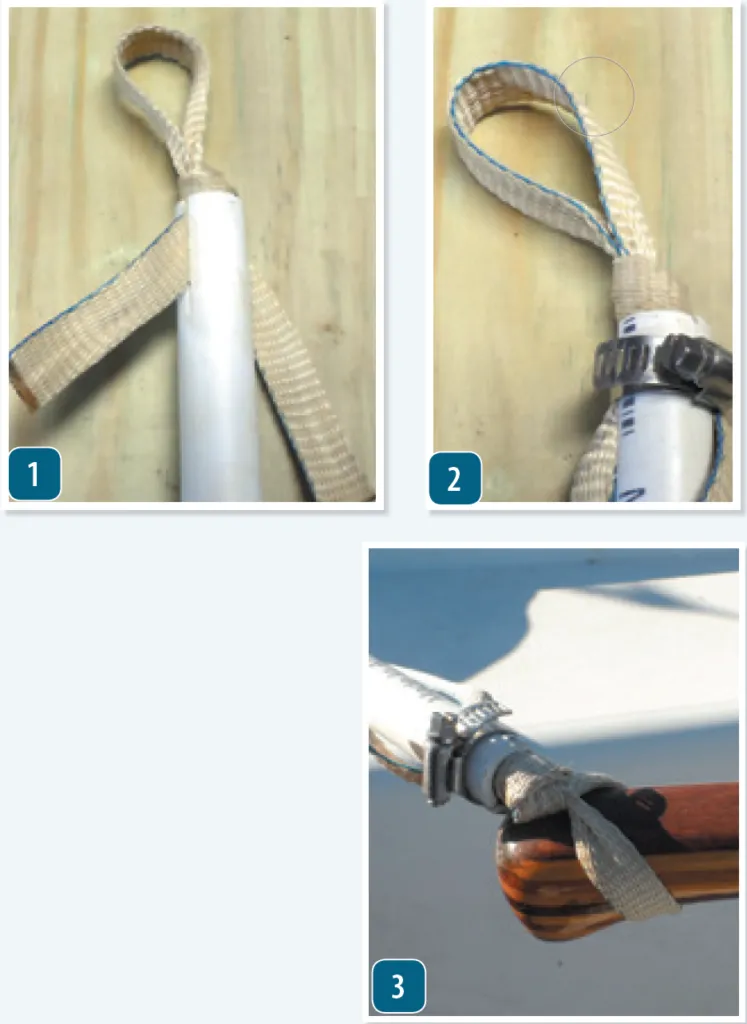
- Start with a 15-inch length of 1/2-inch webbing and form a loop that fits snugly over your tiller. To form the loop a simple overhand, or figure-eight knot works well. You want everything snug, but you also want to allow enough space between the pipe and the tiller to create a free-moving swivel (see photo 3).
- Slot the ½-inch PVC pipe with a hand saw about ¾ inch deep on both sides.
- Slide the webbing tails through the slots (see photos 1 and 2), lay them down the sides of the pipe, and use a hose clamp to squeeze the slots closed on the webbing. A second clamp backs it up. Cover the hose clamps with athletic tape to prevent scratching.
- Slide the webbing loop onto the tiller and tape it in place with 1½-inch athletic tape (see photo 3). The webbing will stretch for a snug fit.
- Cut the extension to the proposed length, leaving it a little long to start.
- If you cut off too much, it can be added back using either glued couplings (fixed) or threaded adapters (to simulate an adjustable extension).
A mock-up is just a fitting aid, not a DIY option. It will be floppy and heavy, to the point of convincing you to do without an extension, but stick with it. Try a number of seating positions, postures, and grip styles (dagger vs. golf). The coaming offers good visibility ahead, but will need padding if you want to sit there for long. Is your back in a weird twist? How’s the wrist holding up? Try multiple position grips and seating positions, since the best choice will change with the weather. Be fussy and get it right.

Try a few tacks and jibes to learn how it swings when you pass the extension. You may find that when it blows you like to sit down in the cockpit, fist on the tiller. Our F-24 trimaran requires two extensions to cover the enormous range of requirements— a 4–foot extension for cockpit and coaming use, and a 10-foot length when sitting on the ama (see photos above). Fortunately, our stern rail rest supports them both “Tacking and Self-steering with a Tiller Extension”).
Is the tiller forward or aft of the mainsheet? If aft, very long extensions can be passed behind the mainsheet. If forward of the mainsheet the length is constrained by what you can pass between the end of the tiller and the mast or cabin, and how many crewmate heads you are willing to smack. That’s an exaggeration, of course, but it is a factor.

Duckworks , www.duckworks.com ■ Racelite Tiller Extension (part# RL494) www.duckworksbbs.com/product-p/rl-494.htm , ■ Ronstan Universal Tiller Extension Joint (part# RF3133) www.duckworksbbs.com/product-p/rf3133.htm
Murrays sports , www.murrays.com ■ Hobie Tiller Yoke (SKU# 01-0062) www.murrays.com/product/01-0062
Ronstan , www.ronstan.com ■ Ronstan Tiller extension hardware (multiple parts) www.ronstan.com/marine/range.asp?RnID=075
Forespar , www.forespar.com ■ Spinlock TFP Quick Release (part# 104004) www.forespar.com/products/tiller-extension-twist-lock.shtml .
Spinlock , www.spinlock.co.uk , ■ Spinlock Spinflex Joint (SPEJB-KIT) www.adventurehardware.com.au/tiller-extensions/tiller- extension-spares/spinlock-spinflex-joint-for-ejb-600-and-900- tiller-extensions/
Carbon Fiber Tube Shop , (tubes of various sizes), www.carbonfibertubeshop.com
Handle design
- Straight pole. A golf-style grip works well with a simple stick extension. It’s easy to choke up. You can also use a dagger grip.
- Ball-end. The ball is easy to grip and improves ergonomics of the dagger grip by providing a pivot point. Proper length is critical to comfort and efficiency.
- D-handle. Because the extension rotates, you can use the same grip and motion as you would holding a tiller; these are found primarily on larger boats and when the cockpit is too wide to grip the tiller directly. These are only for small boats that are hard to steer or for boats over 27 feet.
Some folks keep several extensions onboard and switch to a golf or dagger grip in lighter winds. Before deciding which style is best, determine whether your boat has an easily balanced helm or whether it has a heavy helm that requires more force to steer.
- Grip Size. We like skinny tubes for dagger grips and fat carbon poles for long extensions that will be held with a golf grip at multiple points (common on multihulls). Athletic tape is good for renewing a slippery grip, but it will need to be re-wrapped every so often.
Attachment hardware
To attach the extension to the tiller, we like the polymer ball-joint type for dinghies and sport boats up to about 24 feet. Both Ronstan and Forespar offer this type, and both provide an excellent feel.
However, expect to replace the joint every few years, depending on sun exposure and use. These polymer joints are not the best choice if the extension will be left in place. They also are not a good choice for larger boats.
The Spinlock Diablo is a stronger version for larger boats. The tiller is not as comfortable to hold directly when the polymer couplings are removed, since the receptacle that remains on the tiller is sharp and lumpy.
When released, the Diablo has a joint that allows it to stand vertically, so there’s no need to tend the extension at all times. However, after about a year in the weather, the extension will no longer stand up straight, nor will it clip down as easily. We’d reserve these for boats that always use an extension.
Metal hinges have the clear edge in strength and durability in the sun. You can leave these installed on the tiller. If you do, you can extend the life of the grip by covering it with a Sunbrella sleeve.
An inexpensive hinge, such as the Racelite swivel , can be used as the basis of a very functional DIY extension. We’ve used this and variations for many years.
We like the flush-mount Forespar TFP Quick Release for boats that don’t always use a the tiller extension. When you remove it, the tiller is essentially free of any obtrusive hardware and is still comfortable in the hand.
A carbon or fixed-length stick is preferred if the extension might be stepped on. Adjustable aluminum extensions jam at the slightest kink or dent. Most important, be certain the adjustment won’t slip during a high-force steering adjustment.
We liked all the straight-tube extensions we tested, but have a practical preference for metal hinges for cruising or racing boats and for polymer hinges for dinghies. We like the Ronstan TFP on our F-24 and Murray Sports’ Hobie hinge on beach cats. The Spinlock EA is a good choice for on heavier boats, and the Harken Battlesticks are a great match for smaller boats.
The polymer joint on the Spinlock is pre-molded to rest at a 30-degree angle. This means that although it won’t stand completely vertically, it will lie down more easily in the clips.
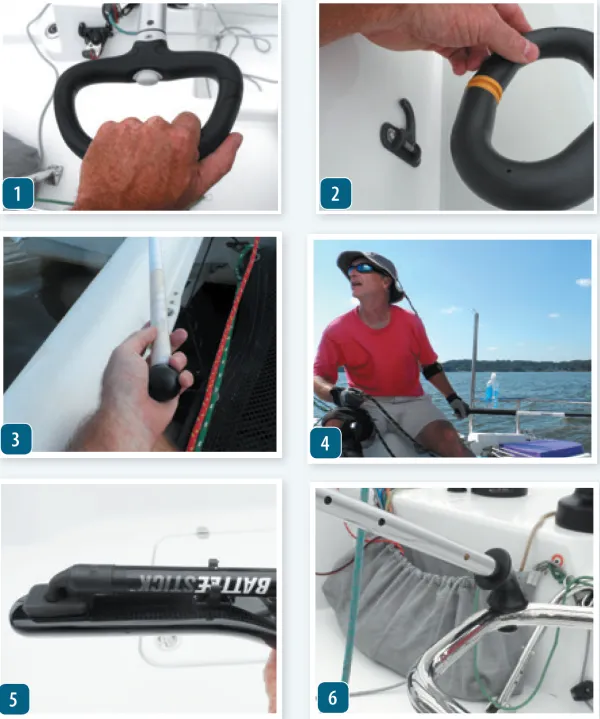
For most sailors, one tiller extension is enough, but for some racers, the best extension can vary by arm length.
- The Spinlock EA D-grip is a favorite among racers. The swiveling grip allows the hand to rotate for best comfort. The the grip and action are similar to holding the tiller directly.
- A folding hook fits into a slot in the Spinlock EA D-grip tiller extension. This can help keep the rudder locked at anchor, or keep the helm steady when the helm is balanced and the boat will hold a course on its own.
- Athletic tape (renewed frequently) is an inexpensive way to ensure a positive grip. Racquet tape also works.
- To steer comfortably with a dagger grip, you might have to move to the outer rail.
- The Ronstan Battlestick with its flexible rubber hinge and universal-type joint is a great match for smaller boats. In this photo, it is “parked” on a clip on a carbon-fiber tiller.
- The Spinlock Diablo Universal joint allows a positive connection with the tiller, and easily swivels through 360 degrees on multiple planes. The spring-loaded pins adjustments are more secure that twist-lock.
All the D-lock designs are pin-lock. Because the handle rotates, a twistlock is impractical. On the good side, pin-locks are more secure under high load.
The pin lock adjustment on the Forespar Ocean Racer is activated by squeezing two handles together. It’s available with a quick release or Forespar’s “StaFast” attachment.
The adjustment on the Spinlock EA is triggered by a button, requiring a second hand to release but resulting in a lighter, cleaner design than the Forespar pinch system; both had fans among our testers.
Tiller Extensions
Tiller extensions are a personal choice. It has to feel right in your hand, provide good feedback, and deliver powerful steering adjustments when needed. It must be the correct length and be easily passed from one side to the other when tacking. It must be capable of delivering adequate force without being too heavy, offer great sensitivity in light wind, and withstand getting sat on without kinking. It’s a tall order to fill. No wonder we’re still looking for that ideal stick that provides perfect control and improved comfort.
Technical Editor Drew Frye is the author of “Rigging Modern Anchors.” He blogs at www.blogspot/sail-delmarva.com
RELATED ARTICLES MORE FROM AUTHOR
How is it that the recent “WayPoints” email has this title on its front page: “The Many Faces of Tiller Extensions” followed by the paragraph below and further same-context paragraphs? “Chips and scrapes in a carefully painted mast start out as a cosmetic issue. But as moisture intrudes and corrosion takes over the paint blisters and hard metal becomes powdery aluminum oxide. Left unattended, especially in damp, salty areas, such as in the bilge or underneath mast hardware, this corrosion process can destroy metal and impair the integrity of the spar.” Once again there is some disconnect in proofing an article.
LEAVE A REPLY Cancel reply
Log in to leave a comment
Latest Videos

Island Packet 370: What You Should Know | Boat Review

How To Make Starlink Better On Your Boat | Interview

Catalina 380: What You Should Know | Boat Review
- Privacy Policy
- Do Not Sell My Personal Information
- Online Account Activation
- Privacy Manager
Best Small Sailboats for Beginners
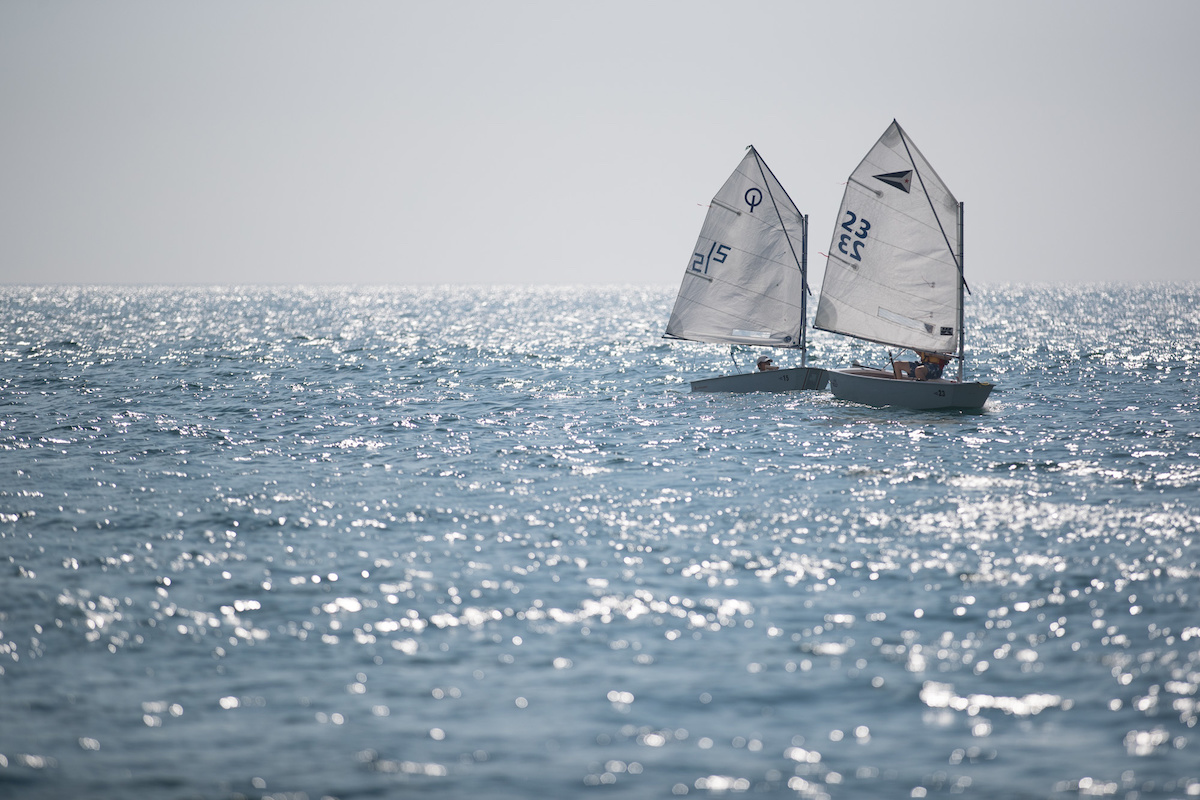
There are a number of classic trainers used by yacht club youth programs as well as techie new designs. Without mentioning specific models and brands, it’s difficult to outline which small boats are best but here are things to look for in good teaching boats.
Some of the best small sailboats for beginners include:
- Boats with tillers steering
- Boats with no winches
- Sailing dinghies
- Small sloops
- Small catamarans
- Rotomolded boats
- Trailerable sailboats
Explore All Sailboat Types
Boats with Tiller Steering
Steering by tiller (rather than a wheel) can make a difference when learning. Tillers are directly connected to the rudder that manages the boat’s direction. Tillers provide quick feedback about the strength and direction of the wind as well as the boat’s turning agility at various speeds.
Boats with No Winches
Boats that require no winches to manage the sheets and halyards are best for youngsters and new sailors. These boats usually don’t experience the same forces on the sails and rigging as larger boats, which can be a handful when the wind starts to blow. Winches are usually replaced with cam or jam cleats, which are easy to use.
Sailing Dinghies
Sailing dinghies are usually rigged with one mast and one sail and offer kids and new sailors simplicity so it’s easy to learn the ropes. Less overwhelming than boats with two sails, dinghies are light and responsive. They also have a shallow draft due to side or centerboards so they can be sailed just about anywhere. In some cases (whether from a wind gust or sudden crew weight shift) sailing dinghies can capsize so students should wear lifejackets and know how to swim. Sailing dinghies are usually sailed by one or two people.
Small Sloops
Small sloops with a mast that carries head and mainsails are the next step so students learn how sails work together. Headsails can be hanked on or attached to a small roller furler. These boats may have some or no winches, which also makes them easier to maintain. These boats can usually be sailed with one to four people.
Some sloops can scale up, providing a more challenging experience for sailors as they develop skills. Certain models can carry spinnakers and larger headsails to teach sail combinations and new sail trim techniques. Others offer the ability to hike out (shift crew weight well outboard to balance the boat against the wind pressure in the sails). This kind of sailing is more advanced.
Small Catamarans
Small catamarans provide extra stability for those who may be nervous about capsizing or aren’t fond of heeling (tipping while sailing). With two hulls providing a wide and stable base, catamarans area ideal for beginners, which may be why they’re often used by resorts as their beach sailing tourist boats. Rigged with one or two sails, small cats are tiller steered and usually have a trampoline that the students sit on and sail.
Rotomolded Boats
Small rotomolded boats are very forgiving due to their durable construction. Unlike fiberglass or wooden boats, rotomolded (a type of plastic construction technique) trainers can bounce off docks or other boats and cause or sustain little damage. Dinghies and catamarans can both be made via rotomolding.
Trailerable Sailboats
Finally, small sailboats that can be trailered to different locations add variety and that makes learning fun. Students can learn to sail in different wind and water conditions and enjoy their boats differently on vacation or with new friends.
Learning to sail involves all the senses and requires a level head and lots of practice and although it can be learned in many ways, the best way is to start with a boat that’s small, simple, safe and durable.
Read Next: Small Boats: What Are My Options?
You Might Also Like:
- Sailing Basics: 10 Nautical & Sailing Terms to Know
- Learning the Basics of Sailing
- Why Sailing?
- Find the Right Boat for Your Lifestyle
- Explore Sailboat Brands
Join Our Newsletter!
Get community news, buying bargains, and how-to guides at your fingertips.
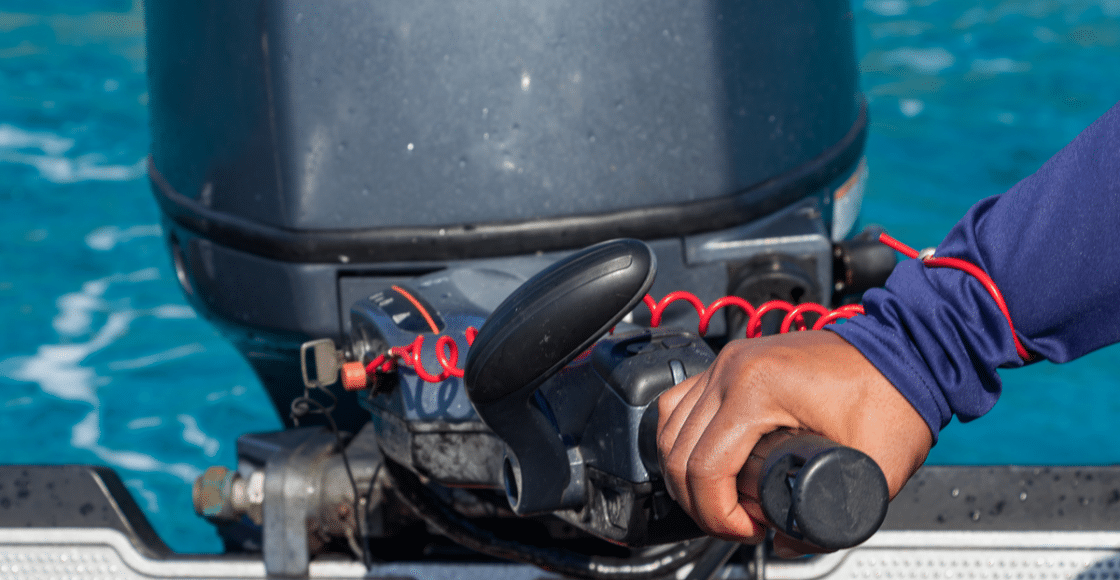
What is a Tiller on a Boat?

Table of Contents
A tiller is a lever that is attached to the rudder and is used to turn a boat. Tillers are used on power and sailboats, and a tiller and rudder combination is the simplest way to steer a boat.
Or, the steering system can be very complex, with multiple rudders and steering components that must be aligned to work correctly. These more complicated steering systems can be attached to a tiller or wheel. Even with multiple rudders, some boats use tillers, some don’t, and a select few offer both.
Using a tiller is backward from using a steering wheel and takes a bit of getting used to. The steering wheel is turned in the direction you want to go. However, you push a tiller the opposite of the direction you want to take.
Whether sailing an eight-foot pram or an eighty-foot schooner, your boat will have a rudder. The difference between the two is how they turn that rudder. The pram will use a tiller. The schooner, however, will likely use a very large wheel to set its course.
What is the difference between a rudder and a tiller?
The rudder of a boat protrudes into the water from where it hangs on the transom , or it can be placed under a boat. On the other hand, the tiller is the lever one moves from side to side, making the rudder turn.
A rudder is a blade in the vertical position, and it acts as a foil. Rudders can be constructed from wood, fiberglass, aluminum, or carbon fiber. As water passes over the rudder, its position determines the course of the boat. The tiller is a lever that you use to turn the rudder to steer a boat.
On many power and sailboats, the rudder(s) are out of sight beneath the hull . For this type of design, the tiller is fitted to a post. The post is attached to the rudder, and it is fitted under the boat.
When steering with a tiller, it is moved opposite of the direction you want to go. It doesn’t take long to grow accustomed to using a tiller, and you have already used one if you have ever used an outboard motor that is so equipped.
Where is a tiller on a boat?
It can be to the rear of the boat (astern), or it can be forward of that location and be fitted to a pipe that comes through the boat’s decking. Wherever it is located, its length and fittings (cleats, lines, and self-steering system attachments) are different from boat to boat.
What remains the same is that the tiller is what you use to steer the boat when so equipped. Tillers are often seen on boats less than 30 feet in length and predominately on sailboats. However, even some powerboats use a tiller for steering, and they are still used on many fishing and pleasure boats.
A tiller is chosen over a wheel for steering a boat because it is simpler and easier to repair if it breaks. In addition, the components of a steering system add weight to a boat and can be complicated.
A few newer style boats, such as sailing and ocean kayaks, use foot pedals attached to pulleys that lead to the rudder and move it side to side. This type of system works well on some boats but not on others.
Small outboard motors have a tiller.
Small outboard motors have a tiller attached to them to turn the motor and control the engine’s speed. These are usually seen on outboard motors that are 15 horsepower and below. However, they even offer tiller extensions for use on some boats.
Although they lack a rudder, the principle is the same, and the motor’s thrust takes its place. Outboard tillers house the throttle on many models, and others offer more features than a throttle alone.
A boat’s steering system
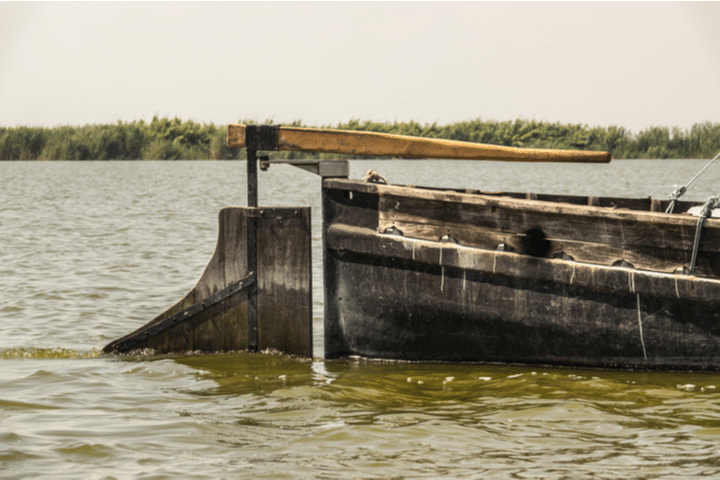
The most rudimentary steering system for a boat is a paddle. When wielded by someone with skill, paddling is very effective. Next up are oars for propulsion and steering, and again, a person skilled with oars can spin a boat within its own length.
On up the evolutionary trend of boat design came the long oar, strapped to the stern of large craft and used to steer. That was an unwieldy arrangement, and the designers forged on until they came upon rudder after decades of messing about with paddles as rudders.
The affixed rudder and tiller combination came on the scene around the 1st century. Voila, the tiller, was born and was the primary method of steering a boat until someone developed a pulley system attached to the rudder with rope or steel cable.
Even today, with modern wheel steering systems, some world sailors prefer the simplicity of a tiller, even on large sailing vessels. It is more straightforward, not as prone to problems, and is relatively easy to repair. Tillers can be made of wood, aluminum, carbon fiber, or almost any other stiff, durable material. You can fit a tiller with extensions, tiller pins, and attachments for self-steering systems.
What is a tiller pin used for?
Tiller pins are metal pins that allow one to detach the tiller from the head of the rudder very easily. A tiller pin also allows the tiller to hinge upward. This will enable you to store it out of the way when a boat is moored.
Other than sailboats, and some powerboats, tillers are used on narrowboats. A narrowboat is a canal boat that is used predominately in Europe. Most of them use rudders with which to steer, to which a tiller or tiller bar is attached.
The tiller pin on a narrowboat is often a decorative metal piece with a specific purpose. It performs the same task as it does on dinghies and creates a hinge point that allows the tiller to be bent back 180 degrees so that it is out of the way of the cockpit when moored.
What is a Norwegian tiller?
The Norwegian tiller is but another idea that facilitates steering a sailboat. Due to the design of a boat, tillers have been crafted to overcome fitment on double-ended sailboats and on boats whose rigging lies in the path of where a tiller generally resides.
Thus, the Norwegian tiller is placed at a right angle to the rudder instead of aligning with it. The tiller is then fitted with a stick with which you push or pull the tiller to steer.
Methods of steering a boat have evolved; however, some of the old ways of doing things have been proven to work well. For example, rudders and tillers may be more high-tech than 50 years ago, but they still serve the same purpose; they are used to steer a boat.
Learning the Ropes of Boating
Whether you’re a novice boater or have been around them for decades, boat designs are continually evolving, and the evolution makes them more costly. So let’s face it, boating is expensive, and the best way to learn if you like to sail, fish, or even go boating is to get on the water.
At Boatsetter, a local fleet of boats awaits your adventures. The fleet is comprised of sailboats, fishing boats, ski boats, yachts, and houseboats . They offer you endless opportunities to find what boating niche suits your fancy. So, no matter where you live, finding a boat to sail, or one with which to chase a prized bass, there’s likely a Boatsetter boat near you.

Boatsetter empowers people to explore with confidence by showing them a world of possibility on the water. Rent a boat, list your boat, or become a Boatsetter captain today.
Browse by experience

Explore articles
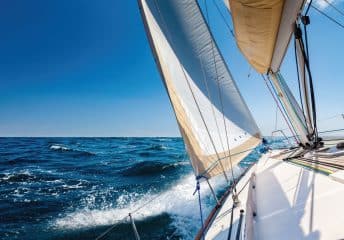
How Sails Work: Understanding the Basics
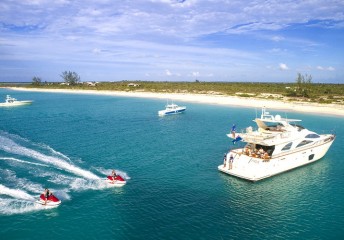
Get the All Inclusive Boatsetter Experience in Turks and Caicos

Dock 'n' Dine: Best Waterfront Restaurants in San Diego to Get to by Boat
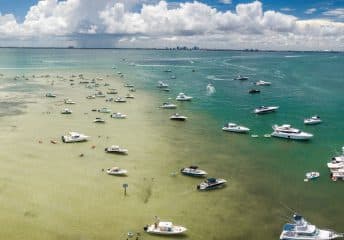

9 Best Sandbars in Florida
Bobby's Boat Works

Bobby's Boat Works
Rudders, Dagger Boards, and Tillers.
Products and Services
In stock components.
We have many rudders, daggerboard, tillers and other items premade and ready to ship. To see these items please use the shop button at the top of the page and navigate to the item you need for your boat.
Made to Order Components
Due to a high demand for stock items and a large backlog, we are not taking any custom orders at this time.

I built my first boat in 2005 and found the building process to be almost as much fun as being out on the water. Since that time I have built several boats, some for me and some for others. In December 2019 I decided to buy John Owens' business of making rudders, daggerboards and tillers for several production boats. I always found that these were some of my favorite parts to make during a boat build. The foil is such an intimate part to the performance of the boat and making one that water would flow smoothly over fascinated me.
a great reputation for quality products at a fair price and it is my intent to continue that tradition.
La Grange, Texas 78945
(979) 250-1668
Thanks for submitting!
“Adventure Gear Insider is reader supported. We may make a small commission at no extra cost to you should you make a purchase through links from this site. Learn more ”
The Best Small Sailboat For Beginners. 8 Great Boat Options

If you are new to sailing and want to get a boat, what should you get? There are tons of sailboats out there on Craigslist, eBay, and Marketplace. Prices can range from free to a hundred thousand or more. What should you get for your first sailboat? Keep reading below to learn a little more about sailboats and what you should look for. I also have my picks for the best small sailboat for beginners.
What makes a sailboat good for beginners?
I learned to sail in middle school and have done it regularly since then. I spent my college summers working as a children’s sailing school instructor at a few yacht clubs around the US. I’ve raced sailboats a ton too on all kinds of boats from collegiate buoy racing too overnight long distance races. After years of doing this, I am way more of a go sailing for fun kind of guy than someone who lives for the competition.
For anyone thinking about learning to sail, it’s not that hard to learn sailing basics. You can teach yourself watching Youtube vidoes but it wouldn’t hurt to take a sailing lesson just to learn the basic sailing terms and see a live hands on demonstration of how to sail.
Here is what I have learned over the years for which boats make learning to sail easier.
Easy to sail
You need a boat that is easy to sail. You don’t want to get a boat that capsizes super easily. You want a stable boat that can tolerate some mistakes without sending you into the drink. You want a boat that isn’t too overpowered so it won’t feel terrifying if the wind picks up while you are out.
Easy to rig
You want a boat you can rig and put together easily. If it’s a trailerable boat you need a mast you can put up and down without hurting your back or needing a bunch of tricks. A racing boat with a lot of sail controls may have a ton of things you need to hook up when rigging it and lots of adjustments depending on wind conditions. A recreational day sailing boat may have very few. As a beginner sailor looking for a boat, less is more. You want something that leans towards, lift the mast, put the sails on, hoist, and go.
What exactly is a small sailboat anyways? A read an article recently in a popular sailboat cruising magazine. They labeled a 36 footer as a “compact cruising yacht”. There is nothing compact or small about a 36 footer. Bigger sailboats react slower to steering and sail controls. A larger boat will have a lot more momentum when you are trying to get on and off the dock. The bigger the boat, the more load and force on all the lines and sails.
I recommend learning to sail first on something simple like a Sunfish. A little 14 foot sailing dinghy that can hold 1 or 2 adults. If your more ambitious and want to start with a boat you could go cruising in then a Catalina 25 or 27 are good choices. You really should not go any bigger than that for your first boat. A Catalina 30 weighs twice as much as a Catalina 27 and you can’t just easily push it around the dock. A 30 footer should be saved for your second or later boat.
Dinghy vs keelboat
Your first sailboat can be a dinghy without a keel or a keelboat. Small keelboats can make really good learning boats. With most keelboats you don’t need to worry about capsizing. If you go with a dinghy get something that is easy to upright.
Flying Scots are used for learning sailboats in many places including a sailing club I used to belong too. They are big stable and tubby. They are horrible to upright if you do manage to capsize them. You will need help from a powerboat to do it. If you go for a dinghy with no keel, it is better to stick to 15 feet or under so you can upright it without outside help. The 16 to 20 foot dinghy is where it can take some skill to self rescue yourself after a capsize if it’s possible at all.
If you decide to get a 20 to 25 foot keelboat, it is easiest to keep them at a marina with a hoist or preferably in the water. Trailer launching keelboats is a challenge even with a swing keel because of how deep you need to get them in the water to float off the trailer.
Minimal sail controls
When you learn to sail, all you really need are a halyard to hoist the mainsail, a sheet to control the mainsail. You don’t really need anything else to be adjustable. That is all you need to sail upwind, downwind, or any other point of sail. Everything else is extra for a beginner.
1 or 2 sails
When you learn to sail all you need is a mainsail. The near perfect learning sailboat is the Sunfish which has a lateen rig with only 1 sail. It has really simple controls and you can rig it wrong and it will still sail for you.
It is okay to learn to sail on a sloop rigged boat with 2 sails. A mainsail and a headsail or jib. Stop there.
You don’t need a spinnaker. Ask anyone who has raced sailboats and they will have stories about what went wrong with a spinnaker. Spinnakers are responsible for breaking more stuff on a sailboat than anything else.
There are boats out there with 2 or more masts such as a ketch or yawl. The second mast is called a mizzen mast. Don’t even think of getting one of these either. It’s just more distraction and things that can break or go wrong. You don’t want a cutter rigged sloop. These have 2 headsails which you again don’t need or want.
Tiller steering
Your first boat should have tiller steering. Don’t get a boat with wheel steering. The wheel mechanism has a lot of drag and slop in it and you won’t feel how the boat is reacting. A tiller lets you immediately feel the boat is out of balance. A tiller is easier to learn to sail upwind with by learning to push it towards or away from the sail. Wheel steering is less intuitive. Stay away from that big cruise with a wheel.
Trailerable boats vs marinas
I grew up in central Pennsylvania where we had small lakes to sail on. This meant a trailerable small boat when we got our first sailboat. I currently live in Michigan near the Great Lakes. Most boats I’ve had as an adult have lived at a marina and not at my house.
If you want to sail more often, keep it rigged at a marina so you have to do the very least possible to get it out on the water. I use my sailboats way more often when I don’t have to hook it up to a car, drag it to the lake, rig it and do the reverse to go home. The downside is cost. Keeping even a Sunfish at a marina or yacht club can cost a lot.
If you want to experience sailing on a low budget, trailering smaller boats is a fine way to go. If you want more convenience and your willing to pay for it consider keeping your boat rigged at a marina.
Portable boats (multi-section hull or inflatable)
There are a few new entries in the boating world that focus on making the boat easier to store and transport. These involve either inflatable hulls or a folding or multi-section hull. These let you store the boat in your garage, large closet or spare room. You can fit them in the back of a small SUV for transport without roof racks or a trailer. 2 great examples of these are the Tiwal inflatable sailboat and Minicat inflatable catamaran.
Commonly available and easy to get parts
Stuff will break on your sailboat if you use it enough. Some parts on a boat are really generic such as pullies, blocks and lines. Other parts are not such as boom or mast end fittings, rudders, etc… There are a lot of cheap boats out on Craigslist. There are a million old 15 foot 2 person sloop rigged sailing dinghies out there in people’s yards. Before buying any of these make sure that all the parts are there. Do not buy one without seeing it rigged with sails up first.
If your not sure find an experienced sailor friend who sails to go look at it with you. If anything is broken look up to see if you can get a replacement part. For many of these old boats, replacement parts are impossible to find which is why they are being given away for not much or free.
If a boat has an active racing class still, there is a good chance replacement parts are available. Racers go out in high winds and push the boat which means they break stuff. Boats like a Sunfish or Laser that are still produced and raced all over are easy to get sails and spare parts.
Keep it inexpensive
When you are buying your starter boat, know that it won’t be your last boat. You will learn what you like and don’t like and you’ll want another boat. There is a disease among sailors called “Threefootitis”. No matter how big a boat you buy, you will always want one at least a 3 feet bigger boat. Don’t spend a ton on your first sailboat. There are tons of Sunfish out there for under $1000 and even under $500. I once got one for free that was still in racing condition. The biggest boat you should consider, something like a Catalina 27, can be had for well under $5000. Under $10,000 for a fully optioned one with wheel steering and a diesel inboard.
See our guide to how much does a small sailboat cost to learn more about what it costs to buy a sailboat.
My top 8 picks for the best small sailboat for beginners
1 – minicat inflatable catamaran.

Minicat makes a line of inflatable catamarans. They are available in a few sizes and suitable for children up to a few adults. Minicat’s use an inflatable hulls with a multi-piece mast and trampoline. The whole thing can be put away in 1 to 2 bags that are 6ft x 1ft x 1ft. They will easily fit in the back of an SUV with the rear seats folded or easily tied to a roof rack.=
The Minicat can hit high speeds just like a solid hulled catamaran. They have a full length fin down each hull to generate power. They are as fun to sail as any traditional hobie cat or other beach catameran but much easier to transport and store.
The Minicat 420 is their most popular design. It is about the same size as a Hobie 14 and good for up to 4 adults. You can learn more about or get one from Great Lakes Watercraft .
2 – Tiwal Inflatable Sailboats

Tiwal makes a line of 3 inflatable sailboats. They range from a basic dinghy to a performance racer. They are capable of sailing with 1-3 adults and children depending on the model. They break down into bags that will fit in the back of most people’s cars.
They use modern rigs with furling or reefing options so you can use them in a variety of winds. They use drop-stich construction to be able to create a v-hull that gives good performance on the water. The Tiwal 3R has hiking racks for even more performance.
Tiwal sailboats have been seen on Below Deck Sailing Yacht. They are one of the favorite water toys for people cruising on big boats. They let anyone try sailing with a small, easy to transport, and affordable package.
Visit Tiwal.com to learn more about their sailboats.
3 – Sunfish

I personally learned to sail on a Sunfish. It is still one of the best sailboats to learn sailing on. It is a super simple boat design that is easy and fun to sail and virtually anyone can rig or launch it.
Sunfish are small, 14 foot sailboats with a lateen rig that only has a main sail. They are sometimes referred to as board boats. They have a flat deck you sit on top of. These are common at beach resorts around the world so almost everyone has seen one at one point or another.
They are extremely simple to rig. You put the mast through the sail/booms and into the hull. There is one halyard to raise the sail. They have one sheet to control the sail. Racers have figured out ways to rig more controls but chances are, any boat you buy used won’t have them. 2 adults can easily fit on a Sunfish for sailing around.
Sunfish are very forgiving and easy to sail. The square sided hard chined hull makes them feel stable in the water even in a lot of wind. If you do capsize they are easy to upright and self bailing.
New Sunfish are still being built and they are raced in many places so parts are sails are easy to get. If you do feel like giving racing a try, chances are there is somewhere you can do it. The boats are sturdy and durable.
To learn more about Sunfish go here.
4 – Laser

A Laser is another 14 foot 1 or 2 person sailboat that falls under the board boat category. They are very common and raced all over the place. It is the most popular racing sailboat in the history of sailing. They are currently an Olympic class boat as well. They have been raced at the Olympics in every summer games since 1996.
Lasers are less stable and capsize easier than Sunfish. They are a bit faster and higher performance for those wanting a little more oomph. They are still manageable for beginners. They are one of the easiest boats out there to upright after a capsize. If you choose one, take it out on lighter wind days until you get the hang of it. Don’t start out on a day with lots of wind and white caps or you will probably spend the whole day capsizing over and over.
Lasers are available with different sized sails. The most common version is the standard laser. The next most common is called the “Laser Radial” which has a smaller sail and mast. Some boats will have both. If it’s your first boat I strongly recommend looking for a boat with a Radial rig.
The thing to watch for with Lasers is their mast step. This is where the mast goes into the hull. If you are looking for one, pour a glass of water into the hole and see if it stays there or drains into the hull. If it drains into the hull, walk away from that boat. The weakness of these boats is the mast to hull joint which weakens with time and lots of use. If the mast step holds water it is fine.
To learn more about Lasers go here.
5 – West Wight Potter 15/19

West Wight Potters are very small cruising keelboats. They come in 15 and 19 foot versions. The 15 footer can be towed behind almost any car. The 19 footer needs a good sized SUV like an Explorer. They are very simple sloop rigged boats without any extra racing controls. They have keels and are stable. There are lots of them out there and they are still being made.
These aren’t the fastest or flashiest boats out there. They are easy to rig, easy to sail and you can do trailer cruising on them. These are for sail regularly on Craigslist and Marketplace. They are known to be solidly built without any common failure points.
If you are looking for a small keelboat you can learn to sail with and tow around these are a great choice.
To learn more about West Wight Potters go here.
6 – Catalina 25 and Catalina 27

Dinghy sailing isn’t for everyone. Some people are more interested in a cruising boat they can go places with and stay over night. If that is you then a Catalina 25 or 27 is a great choice. Catalina 25 and Catalina 27s are 2 of the most common small cruising keelboats out there. They were built from the 1970’s through late 1980’s. There were thousands of both of them built. I have owned 2 Catalina 27’s and had a ton of fun on both of them. They are easy to sail, dock and take care of. They are at the large end of what you should consider for a beginner sailboat but still manageable.
Both boats were available with lots of options. Catalina 27’s can be simple with tiller steering and outboards. They can be more decked out with wheel steering and diesel of gas inboards. Catalina 25’s are the same although they are all tiller steering. Catalina 25s have either a fixed feel or a retractable keel for trailering. As a trailer boat they are huge and you’ll need something like an F350 to tow it.
For your first sailboat, look for a tiller steering, outboard motor, fixed keel version. Look for a boat with a roller furling headsail. This makes the boat much more easy to manage. You can reduce sail area by partially rolling up the headsail if it gets too windy. This is much better for your first boat then buying one with multiple sails that hank onto the headstay that need changed as the wind changes.
Do some more research into the boat for problem areas such as deck core rot or “Catalina smile” before buying one. Price wise, you can find them for $1000 to $10,000 depending on options and conditions.
To learn more about Catalina 25’s go here. To learn more about Catalina 27’s go here.
7 – Hobie 16/14

Hobie 16’s are the most popular beach catamaran in the world. They are common at beach resorts all over the world. I have owned one of these before too. They are also actively raced so parts and sails are easy to get. The Hobie 14 is the slightly smaller and less popular little brother. Both are available used all over the place for cheap.
Hobies are a ton of fun to sail. You can go really fast flying a hull in one. If you get one of your first sailboat use a bit of caution on when you take it out until you get used to it. Don’t start out on a day the wind is nuking and hope it will go okay because it won’t.
These are fairly easy to rig. This is the most complex boat I would ever recommend to a beginner. The mast can be challenging to raise and lower but there are easy ways Macguyver it and make it not so bad.
They do not tack easily upwind. Like all multihulls they can get stuck in irons easily when pointed into the wind. Sometimes you have to give it a little backwind and opposite rudder to get spun through the wind. It’s easy with a little bit of practice. It won’t tack as easily as a monohull.
To learn more about Hobie cats go here.
8 – The 2 person 14 foot sloop rigged sailing dinghy

There are tons of this type of boat available used everywhere. There isn’t any single one that is widespread around the US to mention a particular design. There are tons of 420’s and Flying Juniors, Capri 14’s, JY15’s, Islander 14’s, etc… out there. They are all meant for 2 people. They all have a sloop rig with main and jib and a retractable centerboard. They all aren’t that hard to rig. They all can be trailered behind any car.
They can be sailed by one person in light winds or 2 people in almost any wind condition. They can be self rescued by 2 people after a capsize without help. Keep this in mind if you think about sailing it alone on a windy day.
As mentioned earlier in the article. The thing to watch out for with this type of boat is making sure all the parts are there. Make sure it is in sailing condition before you buy it. If something is broken make sure you can replace it before buying it.
You might also like:
- How Much Does A Small Sailboat Cost? Big Fun For Small Money
- How To Pick The Best Windsurfing Equipment For Beginners

Doug Ryan Co- Founder & Chief Editor
I grew up back east in Pennsylvania and learned to ski on a family trip to Killington, Vermont when I was 6. I immediately fell in love with the mountains and outdoors and have been skiing across the US and Canada ever since. I went to school for Mechanical Engineering, and have a Master’s Degree in Material Science and Reliability.
I am a total gear nerd and love learning how things work and thinking about how they could be improved. Nothing excites me more than trying out new gear. I’d rather spend 3 hours taking my bike apart and learning how to change something than go to a bike shop. These days I reside in Michigan by the Great Lakes and go skiing, biking, and boating as much as possible.
A Simple Tiller Tender
Hands-off sailing
From Issue September 2017
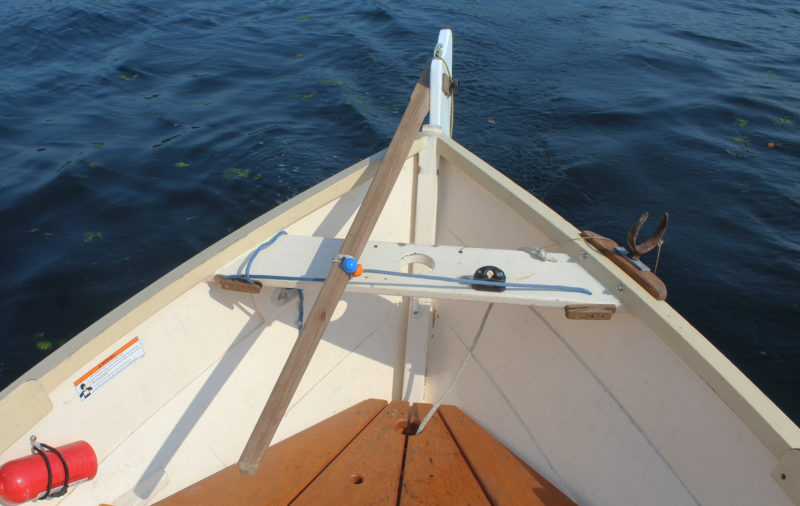
The bungee doesn’t need to be removed to use the tiller. Just push or pull the tiller and the bungee will hold it at the new angle.
I n my years of solo cruising in small boats I’ve found that there are many times when it’s helpful to have both hands free while sailing. I can free one hand by securing mainsheet with a cam cleat or slippery hitch, and then I just need something to hold the tiller in place so I can grab a bite to eat, take a compass bearing, or pull on a jacket.
There are a number of tiller tenders available commercially, but they tend to be bulky, overly complicated, and come at an added expense; from what I’ve seen, many of them also require you to engage and disengage them or adjust their tension.
On a recent cruise, though, my brother showed me a tiller tender that eliminates all those problems. It’s cheap, simple, and utterly reliable. It doesn’t need adjustment and there’s nothing to engage or disengage; you can steer the boat normally with the system in place, and whenever you need to let go of the tiller, it stays where you positioned it.
To set this system up for a conventional tiller, run a line athwartships under your tiller from rail to rail. If your boat has open gunwales or a pair of cleats well aft on the gunwales, you don’t need to add anything to anchor the ends of the line. This line needs to be just taut enough to minimize play in the tiller when the system is in use.
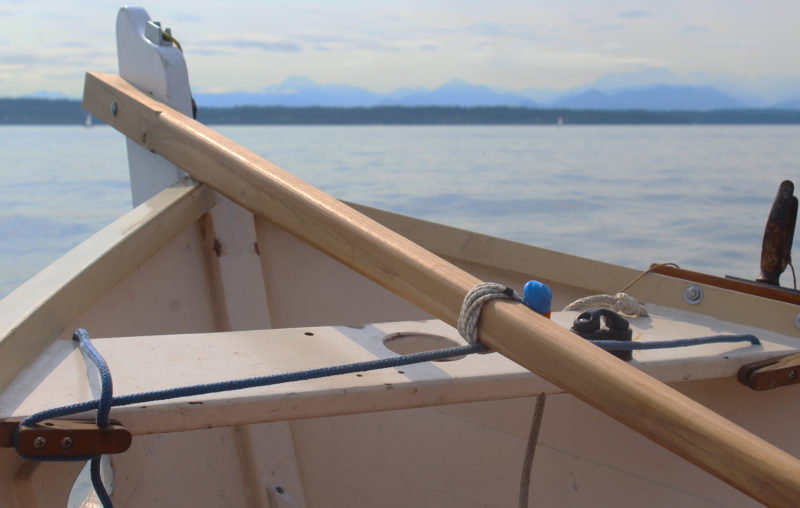
The tiller tender requires only a short line run across the boat under the tiller an toggled bungee loop to squeeze that line to the tiller.
Next, take a short bungee loop with a plastic ball on the end and pass the looped end around both the tiller and the loop you just rigged. Take enough turns with the bungee around both the tiller and the loop of line to pull them tightly together before tucking the plastic ball through the bungee to finish the wrap. You can always adjust the tension if you find the bungee is not tight enough and not providing enough friction to hold the tiller in place, or too tight and making the tiller hard to move.
That’s it. Your tiller tender is ready for action. You will still be able to steer normally, but the friction of the system will hold the tiller in place when you let go. You can set the tiller to hold a steady course or push the tiller hard over to tack or jibe while you tend to the sheets.
After rigging this system on my own boat, I found myself sailing hands-free most of the time, with just a slight nudge of the tiller now and then. I doubt I’ll ever go cruising again, or even daysailing, without having this simple tiller tender in place.
Tom Pamperin is a freelance writer who lives in northwestern Wisconsin. He spends his summers cruising small boats throughout Wisconsin, the North Channel, and along the Texas coast. He is a frequent contributor to Small Boats Monthly and WoodenBoat.
Editor’s note:
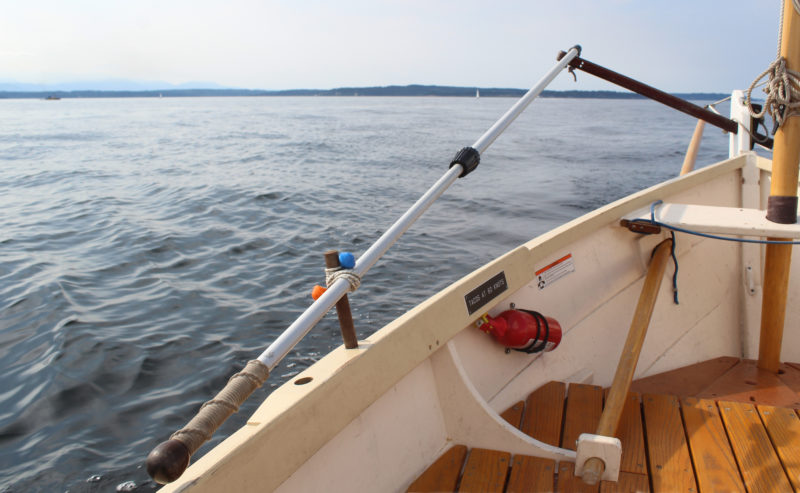
A bungee loop can also be used as a tiller tender on a Norwegian tiller.
To give this system a try, I made a standard tiller that I could attach to the rudder of my Caledonia Yawl (pictured here in the photographs above) and sailed without the mizzen mast in place. I was impressed how well the bungee worked with a standard tiller and wanted to use the same method to create a tiller tender for a Norwegian tiller. I first thought about using the same length of line but set fore and aft instead of athwartships, but a thole pin presented itself as a better place to start. I put the bungee loop over the push-pull tiller and then wrapped it around both tiller and thole.
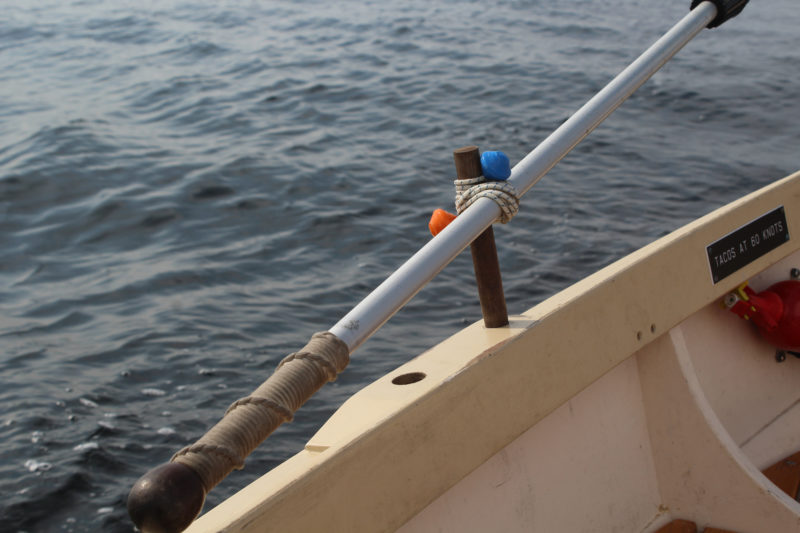
With a Norwegian tiller, the bungee can be looped onto a thole pin or other upright fixture. If the bungee loop has the tiller running through it before it is wrapped, the tiller can be lifted to disengage the tiller tender without loosing the bungee.
That’s all it took, and the bungee worked just as well in this new arrangement. I could change course by pushing or pulling the tiller and leaving it to make the boat come about or hold a straight course. I could also disengage the tiller by lifting it—along with the bungee—from the thole and have complete freedom of motion. The tiller follows me after I tack and gets wrapped with a thole pin on the windward rail.
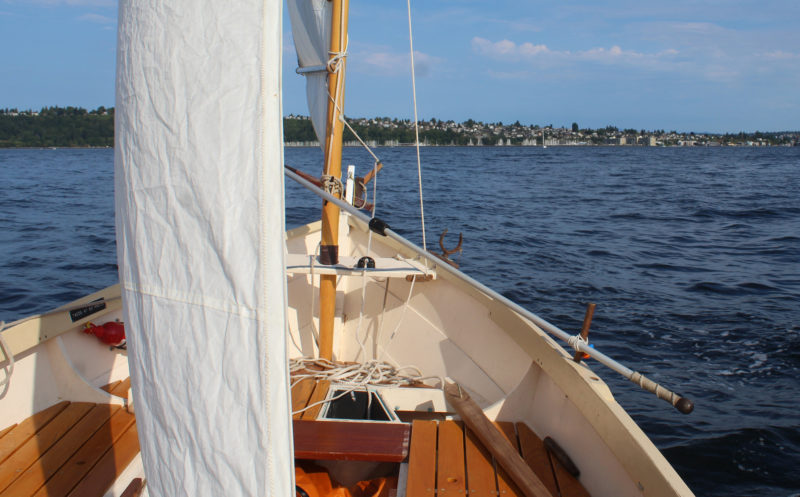
The tiller should be held on the weather rail where it is accessible when the boat heels in a gust.
You can share your tricks of the trade with other Small Boats Monthly readers by sending us an email .
Share this article
Join The Conversation
We welcome your comments about this article. If you’d like to include a photo or a video with your comment, please email the file or link.
Comments (13)
One thing to consider is that the two legs of the line sure look like they are the radii of an ellipse. Accordingly there needs to be some slack in the system to get full range of motion for the rudder, either from the bungees around the tiller, a loose line or by using a bungee-tensioned cross line. The latter is what I have used for a while. The cross line is anchored just ahead of the rudder at small pad eye on the port gunnel, makes a turn through a small shackle attached to the forward part of the rudder, then through a pad eye on the starboard side. A bungee connects the line back to the port pad eye, creating an isosceles triangle when the rudder is centered. It is handy. Having a way to adjust the tension from the bungee is also nice.
Sure glad that wasn’t totally confusing. KISS
Ole thanks for the comment. I’m not sure I follow you about needing a cross line, or about needing adjustments to get full range of motion for the rudder–the system as described is dead simple, and works really well with just an athwartships line and a bungee holding it to the tiller. No need to adjust tension; you can use the tiller normally, but it will stay wherever you leave it when you let go. Works brilliantly.
Ole,thanks. That’s pretty much what I was picturing from your description, then. I think the system described in the article is simpler, though. Once rigged, there is no need to adjust tension in the system at all, and no moving parts (other than the tiller itself), and no hardware. The tight bungee wrapped around the tiller and athwartships line holds the tiller reliably in place (just with friction) whenever you take your hand off the tiller, but you can still steer normally, too, with full range of motion for the rudder. Try it for yourself sometime if you’re curious, and you might well find you like it better.
Or is there some advantage to your system that I’m not seeing? I admit to being biased in favor of simplicity, so maybe there’s something there I haven’t considered. Thanks for the discussion!
Sorry for the late reply. I’m glad the system is working for you. I have been really happy with how well it works, how simple it is, and how easy it is to rig. I doubt I’ll ever have a boat without it now that I’ve used it for a couple of years.
Brilliant! I like it so much I think I might remove my regular factory-made tiller tamer and use yours instead, because it allows convenient “foot-tillering”, while not having to use either hand to disengage and then re-engage the taming mechanism.
This is great! I used to just tie the tiller to an horizontal line every time I need my hands free. The idea of the bungee is definitely worth a try. 🙂
Yes, it works really well as described. The one drawback I’ve discovered is that the friction does wear out the bungee loop eventually. Depending how often you sail, you might find yourself replacing it every year, or even several times a year. Still cheap, though.
Tacos at 60 knots? LOL, just happened to notice the plate mounted on the gunnel on the CY
That plate caught the eye of one of our other readers in a photo in my review of the Gas One Mini stove. Here’s the reply I posted:
Great story. Thanks for sharing and clearing up that inside joke. Best regards and Happy Holidays!
Leave a Reply Cancel reply
Your email address will not be published. Required fields are marked *
Stay On Course
More From This Issue

From The Editor
A Leeboard for a Motorboat
Our canal boat, BONZO, wanders in the wind like on off-leash dog. The design, Phil Thiel’s Escargot, is intended for narrow waters that aren’t likely to be subject to breezes,…
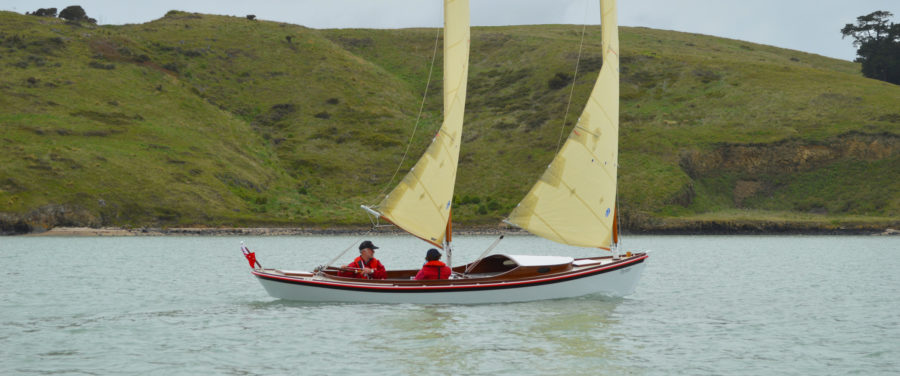
Boat Profile
The diminutive yacht OYSTER, a Milford 20, is a modern take on the early New Haven sharpies that worked the oyster beds along Long Island Sound’s Connecticut shores. Inspired by…
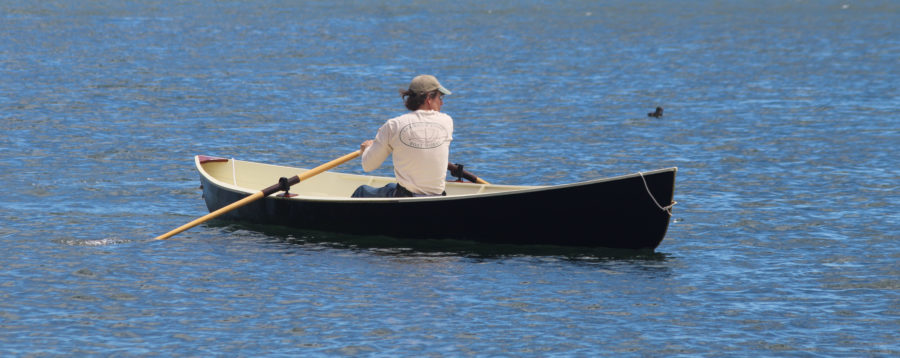
Drake Raceboat
Clint Chase of Chase Small Craft wrote of the Drake Raceboat: “This was the first boat that I designed totally from the numbers.” It’s the third in his series of…

The Texas 200
The chop stirred up the bottom across miles of shallows, turning the water gold under the midday sun. I closed on the windward shore until I was in calmer water,…
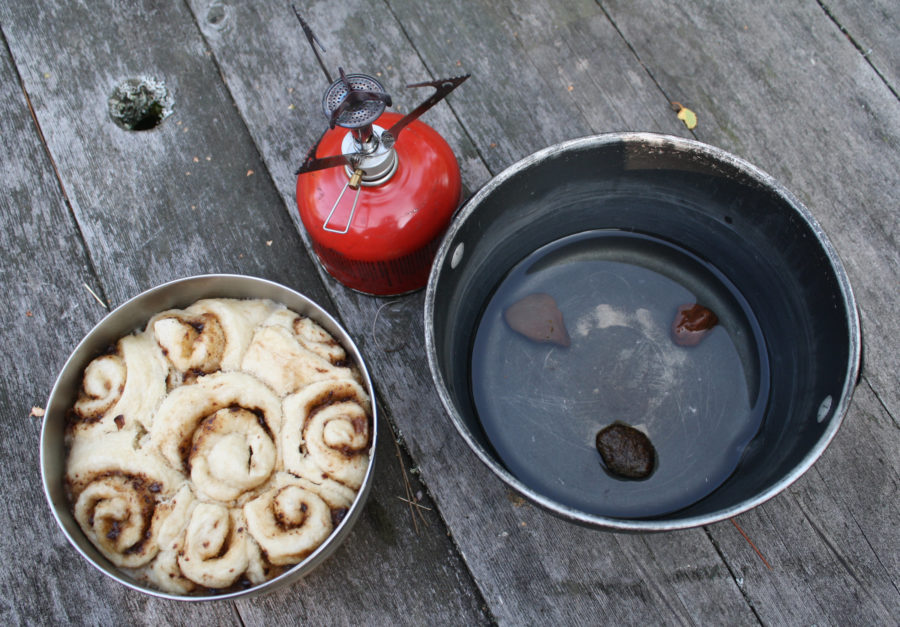
Back-Country Baking
I once looked forward to camp sweets just as much as our young daughters do now. Pineapple-cherry dump cake baked in a Dutch oven was a staple of my Boy…
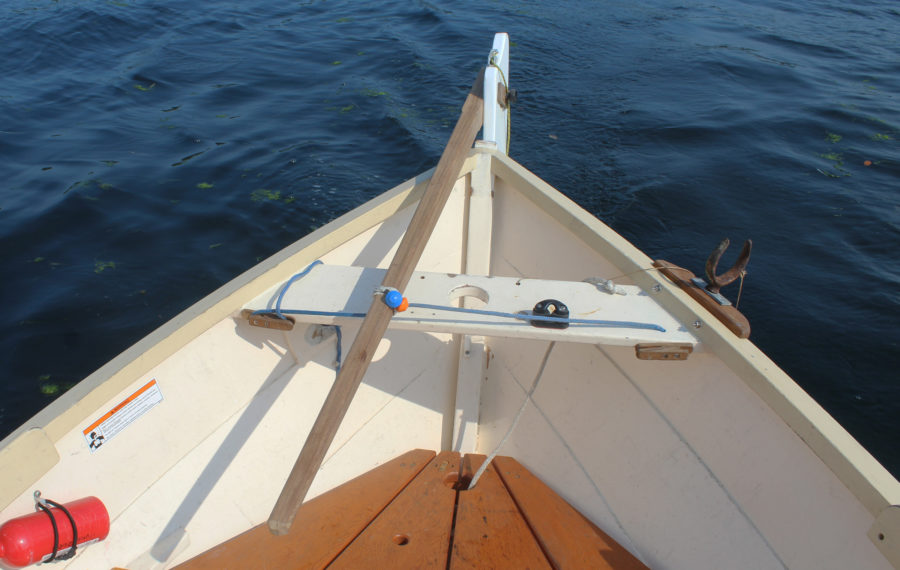
In my years of solo cruising in small boats I’ve found that there are many times when it’s helpful to have both hands free while sailing. I can free one…
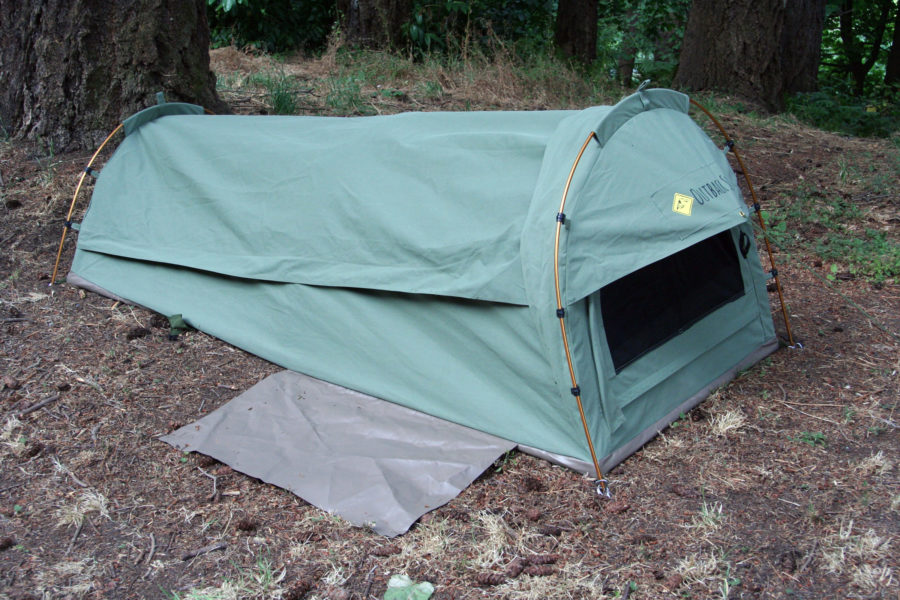
Product Reviews
Pioneer Swag Tent
The nights I slept in the Outback Swag Tent, I was just camped in the back yard. After one night in it I had the information I needed and could…
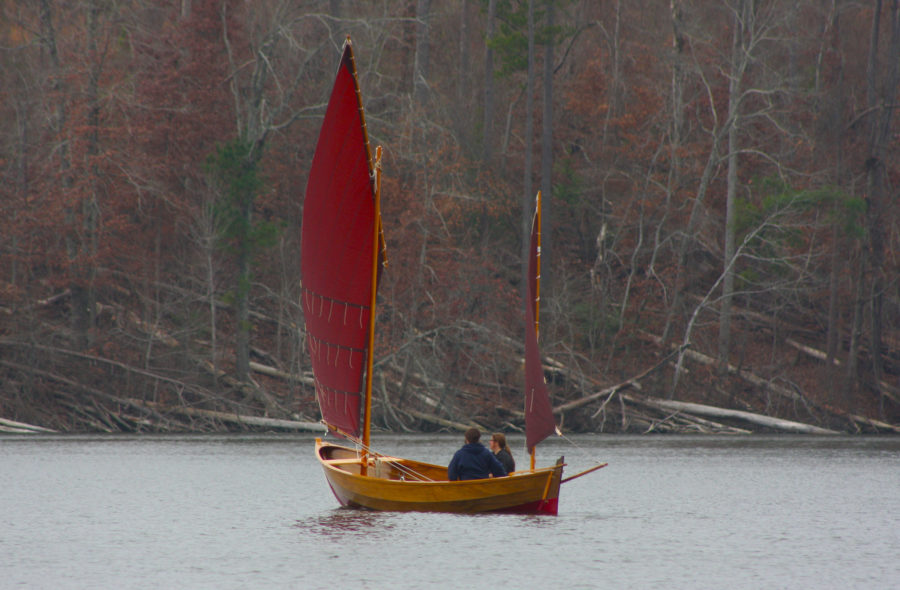
Caledonia Yawl
Reader Built Boats
At the ramp, GYPSY SOUL slipped into the water for the first time. Scotty and Juilio hadn’t sailed a lug rig before, but hauled in the main sheet and took…
More Technique
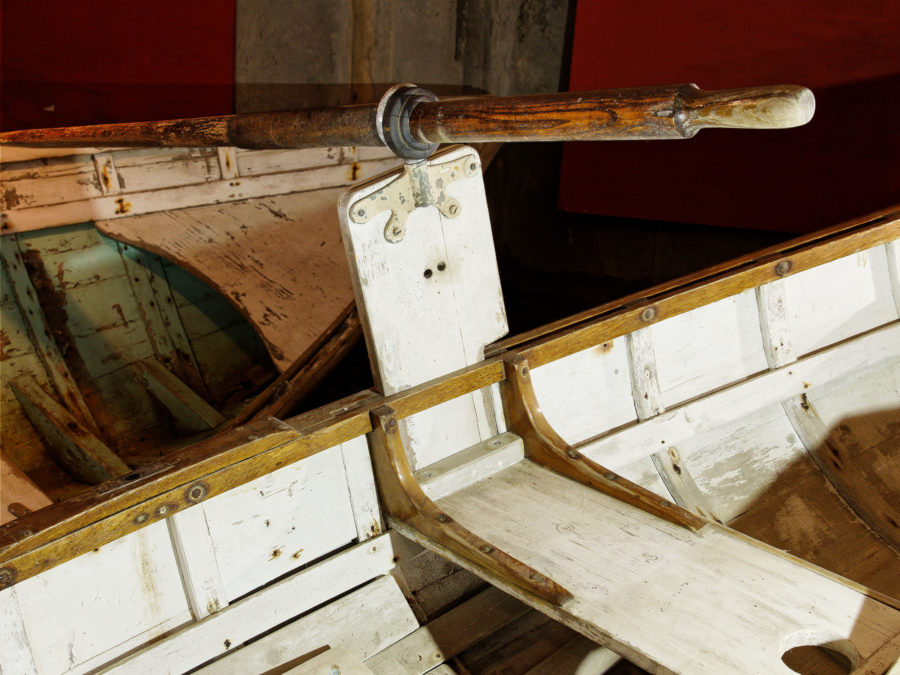
Oarlock Extensions
The choice of extensions, their height and mounting, is going to vary depending on your boat. The easiest modification is a fabricated metal tube and rod or cast lock system.…
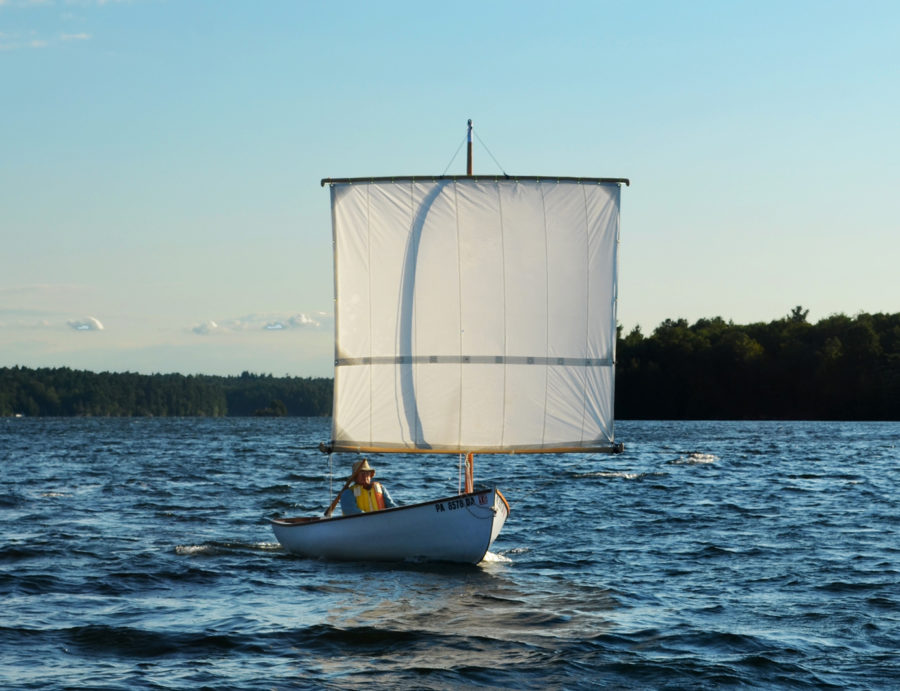
Square Rigs for Small Boats
I've long been fascinated by the ancient square rig. It has been widely acclaimed for its downwind and reaching ability, but the traditional sails were often poor working upwind and…
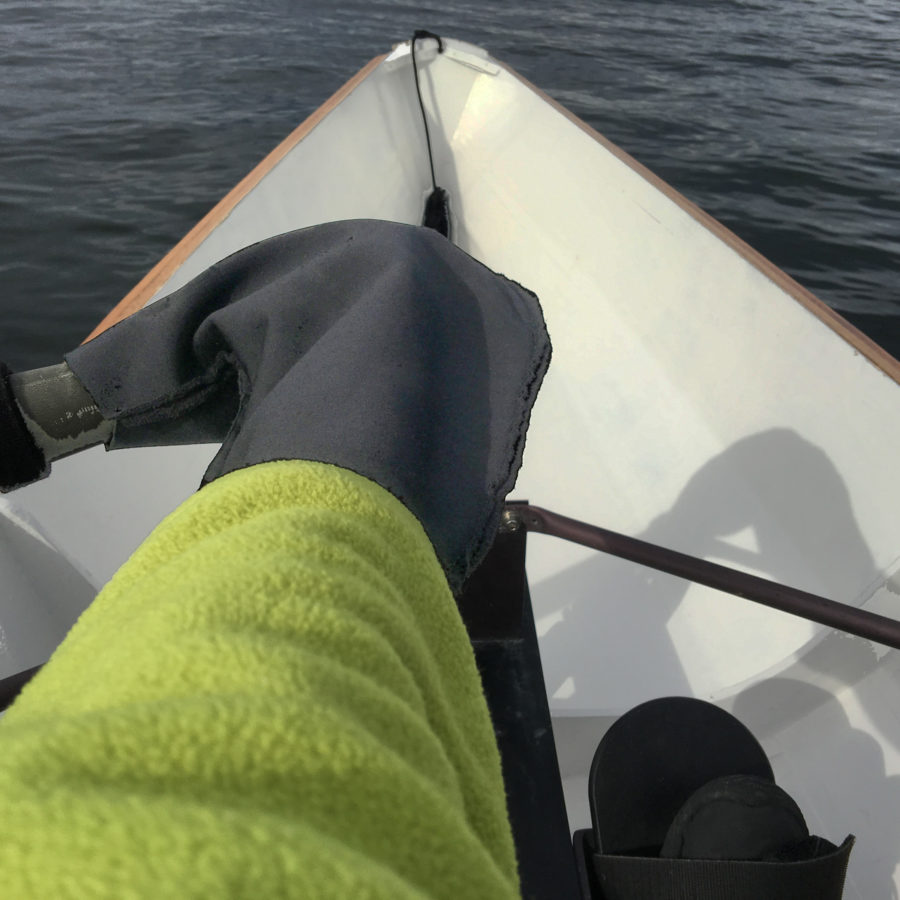
If I can keep my head, feet and hands warm while I’m rowing in cold weather, the rest of me stays warm; pogies are my winter hand covering of choice.…
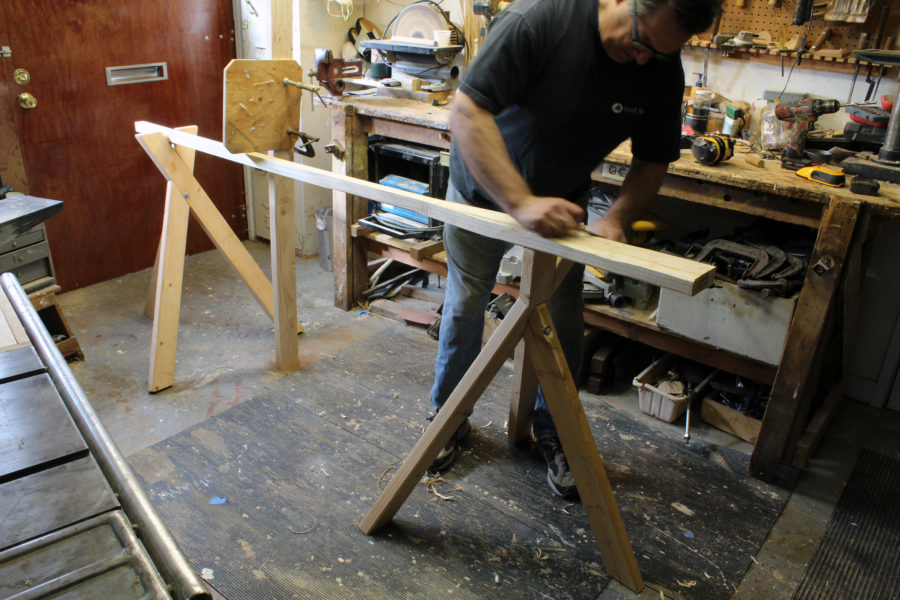
Eton Oar Stands
One shot offered a glimpse of what appears to be the leg of a second stand. I guessed that was supporting the oar handle. The oar blade was cantilevered beyond…
Subscribe Today!
Become a subscriber today and you’ll recieve a new issue every month plus unlimited access to our full archive of backlogged issues.
Already a subscriber? Sign In
Subscribe For Full Access
Flipbooks are available to paid subscribers only. Subscribe now or log in for access.

7 Best Sailboat Autopilot Systems

Last Updated by
Daniel Wade
June 15, 2022
Essential in increasing efficiency, safety, and convenience, marine autopilots are a sailor's best friend when out there on the water. A properly operating sailboat autopilot will keep your sailboat on a selected course even in strong currents and winds and that why you need to go for the best sailboat autopilot.
Steering a sailboat is always fun. And even though many sailors are so good at it, some circumstances can make steering a boat on a straight line or the right course almost impossible. The tides, winds, and the complex hull-bottom designs can throw your sailboat off route and the adjustments that you have to make to return to course can be your voyage killers. Even if you have a crew that regularly sails with you, having an autopilot can help you stay on course and that's exactly why you need the best sailboat autopilot.
In the simplest term possible, an autopilot is an extra pair of hands that can help you in steering your sailboat on the right course. It is a self-steering device for powerboats or sailboats and even the most basic autopilot can help in holding your vessel on a pre-set compass course. Some advanced autopilots can even gather data from your boat and determine whether or not the boat is capable of handling the task in hand.
So whether you have a mechanically-steered boat or a tiller-steered sailboat, an autopilot is of great importance for both you and your boat. And it doesn't matter whether you want to explore your nearest lake for a day or want to sail to the Caribbean on your sailboat, it will make your job a lot easier, efficient, and safer. This is why we've put together this article to help you find the best sailboat autopilot. Read on and find which is best for you and your sailboat.
Table of contents
How to Choose the Best Sailboat Autopilot for Your Vessel
When it comes to choosing the best sailboat autopilot for your vessel, the easiest thing to do would be to go for an autopilot that can steer your sailboat in calm seas. However, this is not advisable since you want an autopilot that works perfectly under very demanding sea conditions. With that in mind, here are the most important things to consider when looking at the best sailboat autopilot for you.
Speed of Helm Adjustment
The best way to measure the speed on an autopilot that's appropriate for your boat is by looking at the number of degrees per second of helm correction. As such a 40-feet boat requires 10 degrees per second, a 25-feet boat requires 15 degrees per second, and a 70-feet boat requires 5 degrees per second.
An above-deck or below-deck Autopilot
Do you want an autopilot that's designed to be used above the deck or below the deck? Well, the most important thing is to choose an autopilot that matches the displacement of your boat. More importantly, above-deck autopilots are ideal if you have a smaller boat while below-deck autopilot is ideal if you have a larger boat.
The Steering System
What type of steering system does your boat have? It's important to understand whether your boat has rotary drives, linear drive, or hydraulic drives.
Control Interfaces
You should choose what's perfect for you as far as the control interface is concerned because this is one of the most crucial parts of an autopilot. The best features to consider include ease of use, waterproof, intuitive display, backlit options, and compatibility with SimNet, SeaTalk, and NMEA 2000.
7 Best Sailboat Autopilots
Here are the 7 best sailboat autopilots.
Raymarine ST1000 Plus Tiller Pilot
(Best for Tiller-steered Sailboats)
The Raymarine ST100 Plus Tiller Pilot is a classic tiller pilot that's one of the best accessories for your sailboat and your everyday sailing escapades. It's designed in such a way that it can accept NMEA data while still offering accurate navigation thanks to its incredibly intelligent software.
This autopilot is designed with a backlit LCD to help you see your navigational data, locked course, and other important information that can make your sailing safer and much better. The fact that the backlit LCD works perfectly in low-light conditions is an added plus.
That's not all; the ST1000 comes with an AutoTack feature that works like an extra hand when you're engaged in other responsibilities. For example, it can tack the sailboat for you when you adjust the sails. Better still, this autopilot is fully-fitted with everything that you need to install it on your sailboat and use it.
- It's easy to use thanks to the simple six-button keypad
- It's perfect when sailing in the calm sea as well as in stormy conditions
- It is waterproof so you don't have to worry about it getting damaged
- Its intelligent software minimizes battery usage thereby prolonging its battery life
- Perfect for tiller-steered sailboats
- The 2-year warranty could be improved
- It's a bit heavier
Garmin Ghc 20 Marine Autopilot Helm Control
(Best for Night Sailing)
If you're planning to go on a voyage, chances are you'll find yourself sailing overnight. With that in mind, you should go for an autopilot that works perfectly both during the day and at night. The Garmin Ghc 20 Marine Autopilot Helm Control is your best sailboat autopilot for these types of adventure.
This amazing autopilot is designed with a 4-inch display that can improve your nighttime readability. This display is glass-bonded and comes with an anti-glare lens that is essential in preventing fog and glare in sunny conditions. This is crucial in helping you maintain control in all conditions, both during the day and at night.
This autopilot also provides a 170-degree viewing angle. This is essential in viewing the display at almost any angle. So whether you're adjusting the sails up on the deck or grabbing an extra sheet below the deck, you can be able to look at the display and see what's going on. So whether a sailing vessel or a powerboat, this autopilot is easy to use thanks to its five-button control.
- The five-button control makes it easy to use
- Comes with a bright 4-inch display
- The display works in all conditions thanks to its glass-bonded, anti-glare lens
- The display offers optimal view both during the day and at night
- It's compatible with other Garmin products
- Only good for sailboat under 40 feet in length
- The battery life should be improved
Simrad TP10 Tillerpilot
(Best for 32-feet or less Sailboat)
For many lone sailors, going with a sailboat that measures 32-feet or less in length is always ideal. Under such scenarios, it's always best to go with a sailboat autopilot that's perfect for such types of boats, and the Simrad TP10 Tillerpilot can be a superb option for you. This autopilot is so perfect as it brings to the table a combination of advanced technological software and simplicity.
Its five-button display makes it user-friendly, easy to use, and perfect in controlling your sailboat accordingly. This autopilot has a low-power draw, which means that your battery will last longer even when used for prolonged periods. This is an excellent autopilot that's designed with the sailor in mind as it goes about its business quietly so that you can enjoy your sailing adventures without noise and interruption from a humming autopilot.
- One of the quietest sailboat autopilots
- The battery life is excellent
- It's designed with one of the most advanced software
- It's waterproof to protect it from spray and elements
- It offers precision steering and reading in all types of weather conditions
- It's easy to use and control
- Not ideal for big boats
Raymarine M81131 12 Volt Type 2 Autopilot Linear Drive
(Best for Seasonal Cruising)
For those of us who love cruising during winter when other sailors are drinking hot coffee from the comfort of their abodes, the Raymarine M81131 is the right sailboat autopilot for you. Well, this autopilot can be an ideal option if your sailboat is large enough to have a full motor system.
This autopilot is one of the most powerful in the marine industry and has an incredible electromagnetic fail-safe clutch. This autopilot is also compatible with other devices such as NMEA 2000 ABD SeaTalk navigation data. In terms of precision navigation, this autopilot will never disappoint you in any weather condition.
So whether you're looking to go ice-fishing or sailing the oceans during winter, this is your go-to autopilot.
- Offers optimal sailing experience and navigation precision
- It's very quiet
- It offers high performance with minimal battery usage
- It's great for adverse winter conditions
- It's expensive
Furuno Navpilot 711C Autopilot System
(Best for Accuracy)
If you're looking for the best sailboat autopilot that will take your navigation to the next level in terms of accuracy, look no further than the Furuno Navpilot 711C. This is an autopilot that enhances your boat's precision as far as staying on course is concerned. This is because the autopilot is designed with a self-learning software program that offers step by step calculations of your navigation and course.
This autopilot also offers real-time dynamic adjustments so that you can steer your sailboat more accurately. Thanks to this self-learning algorithm also offers great power application that significantly reduces the manual helm effort when maneuvering various situations. Its colored graphic display is of great benefit as you can easily read the information even in low-light conditions. So it doesn't matter whether you're sailing at night or during the day, this autopilot will serve you right in any condition.
- It's great for power and fuel efficiency
- The display is intuitive
- It's easy to set up and use
- Its power assist is essential in reducing steering system complexity
- Great for both outboard and inboard motors
- Quite expensive
Si-Tex SP120 Autopilot with Virtual Feedback
(The Most Affordable Autopilot)
If you're on a budget and looking for one of the most affordable yet reliable sailboat autopilots, look no further than the Si-Tex SP120 Autopilot. This is a perfect high-performance sailboat autopilot that can be great for small to medium-sized powerboats and sailboats.
One of the most important features that this autopilot brings to the table is the ability to offer virtual feedback. This is great in eliminating the manual rudder feedback and thereby enhances your sailboat's performance. Its splash-proof 4.3-inch LCD offers one of the best transflective displays in the marine industry. The 4-button operation makes it a lot easier to use and provides the information you need to steer your sailboat safely and perfectly.
This autopilot can be great for you if you have a small or medium-sized sailboat thanks to its ease of use. The fact that it's one of the most affordable sailboat autopilots makes it highly popular with sailors who are on a budget.
- It's simple to install and use
- The virtual feedback is great
- The display is one of the best in the game
- It's quite affordable
- It's not ideal for big boats
Garmin Reactor 40 Kicker Autopilot
(Best for Outboard Motor Boats)
If you have a motorboat that has a single-engine outboard, The Garmin Reactor 40 Kicker Autopilot can be an ideal option. This is a great autopilot that mitigates heading error and unnecessary rudder movement while offering more flexible mounting, which is essential in offering a more comfortable sailing even in the roughest of weather conditions.
This autopilot can be easily fine-tuned thanks to its throttle settings with a touch of a button. Of course, this can be useful especially when the seas are rough and you're trying to remain on course. This autopilot is also waterproof to ensure that it doesn't get damaged with spray or other elements.
With this autopilot, you're guaranteed to enjoy an awesome sailing trip even when going against the wind or when sailing in rough conditions.
- Easy to install and use
- It's waterproof
- It's beautifully designed
- It comes with a floating handheld remote control
- It's great for maintaining heading hold and route.
- It's only ideal for motorboats with up to 20 horsepower
- It's relatively expensive
As you can see, there are plenty of options when it comes to choosing an ideal sailboat autopilot for you. The best thing about the above-described sailboat autopilots is that they're among the best and you can find one that perfectly suits your unique needs and boats. Of course, most of them are quite expensive but they will advance the way you sail and make your sailing adventures even more enjoyable. We hope that you'll find the perfect sailboat autopilot for you.
Until next time, happy sailing!
Related Articles
I've personally had thousands of questions about sailing and sailboats over the years. As I learn and experience sailing, and the community, I share the answers that work and make sense to me, here on Life of Sailing.
by this author
Sailboat Upgrades

Most Recent

What Does "Sailing By The Lee" Mean?
October 3, 2023

The Best Sailing Schools And Programs: Reviews & Ratings
September 26, 2023
Important Legal Info
Lifeofsailing.com is a participant in the Amazon Services LLC Associates Program, an affiliate advertising program designed to provide a means for sites to earn advertising fees by advertising and linking to Amazon. This site also participates in other affiliate programs and is compensated for referring traffic and business to these companies.
Similar Posts

How To Choose The Right Sailing Instructor
August 16, 2023

Cost To Sail Around The World
May 16, 2023

Small Sailboat Sizes: A Complete Guide
October 30, 2022
Popular Posts

Best Liveaboard Catamaran Sailboats
December 28, 2023

Can a Novice Sail Around the World?
Elizabeth O'Malley

4 Best Electric Outboard Motors

How Long Did It Take The Vikings To Sail To England?

10 Best Sailboat Brands (And Why)
December 20, 2023

7 Best Places To Liveaboard A Sailboat
Get the best sailing content.
Top Rated Posts
Lifeofsailing.com is a participant in the Amazon Services LLC Associates Program, an affiliate advertising program designed to provide a means for sites to earn advertising fees by advertising and linking to Amazon. This site also participates in other affiliate programs and is compensated for referring traffic and business to these companies. (866) 342-SAIL
© 2024 Life of Sailing Email: [email protected] Address: 11816 Inwood Rd #3024 Dallas, TX 75244 Disclaimer Privacy Policy
- Articles and Guides
11 Best Small Sailboat Brands: How to Choose Your Next Daysailer or Pocket Cruiser
12th oct 2023 by samantha wilson.

Sailing is a relaxing, invigorating pastime that allows you to harness wind and waves in a unique and historic way without requiring a 50-foot yacht to enjoy what’s special about the experience. In fact, small sailboats allow a delightful back-to-basics experience that often gets lost on larger, systems-heavy sailboats.
On a small sailboat you can connect with the sea, feeling the boat move beneath you. The boat is typically easy to rig, simple to sail, and can even be sailed solo. Small sailboats give you the freedom to trailer your or car-top your boat and go anywhere, and they’re perfect for learning the nuances of sailing. There are many excellent brands and models of small sailboat, each with their own appeal, and here we narrow down some of our favorite in the daysailer and pocket cruiser categories under 30 feet.
Difference Between a Daysailer and a Pocket Cruiser
While there are many different types of sailboat on the market and there is no single definition of either a daysailer or a pocket cruiser, they are used in a particular way, as the names imply. The term daysailer covers a huge array of sailboats, smaller and sometimes larger, and is generally defined as any day boat used for local sailing, with a simple rig, and easy to get underway. A pocket cruiser typically offers a cabin and head, and adequate accommodations for an overnight stay and sometimes longer cruises. Having said that, there is a large overlap between the two in many instances, so the lines may become blurred.
What Size is a Small Sailboat?
Small is a relative term of course, but in general—and for the purposes of this article—a small sailboat is one that could be sailed by a small crew, often with one or two people aboard. It will have a simple rig and be trailerable, and it might be either a daysailer or pocket-cruiser style vessel as above. Within those categories, there are many models and styles, but when it comes to length we consider a sailboat as small when it’s under 30 feet in overall length.
The Best Sailboats Under 30 Feet
Pocket cruiser: Beneteau First 27. The Beneteau First 27 is a modern example of a pocket cruiser, earning Cruising World ’s Boat of the Year award in the Pocket Cruiser category in 2022. With space for up to six people accommodated in a separated bow-cabin and open saloon, it offers families the chance to go farther, explore more, and cruise in comfort. There is a galley with freshwater and a head, adding to the interior home comforts. The sailboat itself is modern, fast, and stable, designed by Sam Manuard, and has been designed to be incredibly safe and almost unsinkable thanks to its three watertight chambers. The handling is also refreshingly intuitive, with a well-designed cockpit, simple deck controls, and double winches allowing it to be sailed solo, by two people, or a small crew.
Beneteau sailboats for sale

Photo credit: Beneteau
Daysailer: Alerion 28. You’ll certainly turn heads cruising along in an Alerion 28, a daysailer whose forerunner by the same name was designed by Nathanael Herreshoff in 1912 and then updated with a modern underbody for fiberglass production by Carl Schumacher in the late 1980s. This pretty daysailer manages to combine a traditional silhouette and classic feel, with very modern engineering creating an excellent package. Over 470 of these sailboats were built and sold in the past 30 years, making it one of the most popular modern daysailers on the water. With a small cabin and saloon, complete with miniature galley area, it offers respite from the sun or wind and the option for a night aboard. The cockpit offers a beautiful sailing experience, with plenty of space for the whole family.
Alerion boats for sale

Photo credit: Alerion Yachts
The Best Sailboats Under 25 Feet
Pocket cruiser: Cornish Crabber 24. British manufacturer Cornish Crabber has been producing beautiful, traditional style small sailboats for decades, ensuring they honor their heritage both in the construction style and appearance of their boats. The Cornish Crabber 24 is the most iconic of their range and dates back to the 1980s. It offers a simple yet surprisingly spacious interior layout with cabin, galley, and head, and a good sized cockpit, as well as seating for up to six people. It’s the perfect family sailboat, with clever use of storage as well as just under 5000 pounds of displacement providing stability and easy tacking. Aesthetically the 24 is simply beautiful, with a traditional silhouette (combined with modern engineering), finished in hardwood trims.
Cornish Crabber boats for sale

Photo credit: Cornish Crabber
Daysailer: Catalina 22 Capri. Catalina sailboats need little introduction, and are one of the world’s best-known, most-respected brands building small sailboats. The Catalina 22 Capri (also available in a sport model) is a great example of what Catalina does so well. While we’ve classified it as a daysailer, it could easily cross into the pocket cruiser category, as it offers excellent sailing performance in almost all conditions as well as having a small cabin, galley, and head. Loved for its safety, stability, ease of handling and simple maintenance, it makes for a good first family boat for getting out onto the bay or lake.
Catalina boats for sale

Photo credit: Catalina
The Best Sailboats Under 20 Feet
Pocket cruiser: CapeCutter 19. This is another model that combines the beauty of the traditional silhouettes with modern-day advancements. The design originates from the classic gaff cutter work boats, but today offers excellent performance—in fact it’s one of the fastest small gaffers in the world. The interior is cleverly spacious, with four berths, two of which convert into a saloon, as well as a simple galley area. With quick rigging, it can be sailed solo, but is also able to accommodate small groups, making it a capable and hugely versatile pocket cruiser.
CapeCutter boats for sale

Photo credit: Cape Cutter 19
Daysailer: Swallow Yachts’ BayRaider 20. Classic looks with modern performance are combined in Swallow Yachts’ beautiful BayRaider 20. This is one of the most capable and safest daysailers we’ve seen, but also incredibly versatile thanks to the choices of ballast. Keep the ballast tank empty and it’s light and fast. Fill the tank up and you’ve got a stable and safe boat perfect for beginners and families. While it’s got an eye-catching traditional style, the engineering is modern, with a strong carbon mast and construction. While this is a true daysailer, you can use the optional spray hood and camping accessories to create an overnight adventure.
Swallow Yachts for sale

Photo credit: Swallow Yachts
The Best Sailboats Under 15 Feet
Pocket Cruiser: NorseBoat 12.5. Can we truly call the NorseBoat 12.5 a pocket cruiser? Yes we can! The sheer versatility of this excellent little sailboat has convinced us. These beautiful hand-crafted sailboats offer exceptional performance and are described by the manufacturer as ‘the Swiss Army Knives of sailboats’. The traditionally styled 12.5 can be sailed, rowed, and motored. It can be trailered, easily beached, and even used as a camp cruiser, allowing for overnight adventures. There is no end to the fun that can be had with this easy-to-sail and easy-to-handle boat, which makes it a dream to learn in. With positive flotation, lots of clever storage, and a full-size double berth for camp cruising, it really is the perfect mini pocket cruiser.
NorseBoat for sale

Photo credit: NorseBoats
Daysailer: Original Beetle Cat Boat 12: All across the bays of the US east coast cat boats have long been part of the ocean landscape. Able to access shallow rocky coves yet also withstand the strong coastal winds, these traditional New England fishing boats have an iconic shape and gaff-rigged mainsails. Beetle Cat have been producing elegant wooden cat boats for over 100 years – in fact they’ve made and sold over 4,000 boats to date. Their 12 foot Cat Boat 12 is one of their finest models, offering lovely daysailing opportunities. It has a wide beam and centerboard that lifts up, allowing it to access shallow waters, as well as a forward mast and single sail gaff rig in keeping with the traditional cat boats. To sail one of these is to be part of the heritage of New England and Cape Cod, and to honor the ancient art of hand-made boat building.
Beetle Cat official website

Photo credit: Beetle Cat
The Best Small Sailboats for Beginners
When it comes to learning to sail, it’s important to have a boat that is easy to handle. There’s no quicker way to put yourself or your family off sailing than to start off with a boat that is either too big or too complicated. When choosing your first boat we recommend the following characteristics:
- Small: The benefits of starting off with a small boat are many, as we’ve seen above. They’re easier to control as well as to moor, and they react more quickly to steering and sails. They can be trailered and launched easily, and the loads generated are much lower than on bigger, heavier boats.
- Easy to sail: You want a boat that is stable and forgiving of mistakes, doesn’t capsize easily, and isn’t too overpowered in a stronger breeze. Keep things simple and learn as you go.
- Simple sail configuration: Choosing a boat that can be rigged by one person in a few minutes, and easily sailed solo, makes it easier to take along inexperienced crews. With regards to the rig, all you need are a halyard to hoist the mainsail and a sheet to control the mainsail.
- Tiller steering: We recommend boats with tiller steering over wheel steering when starting out. The tiller allows you to get a real feel for the boat and how the rudder works as it moves through the water.
For more information on choosing the best beginner sailboat check out our full guide. There are many popular brands of beginner boats including Sunfish, Laser, and Hunter Marlow. Some of our favorites include;
Hobie 16: The classic Hobie catamaran has been a well-loved beginner sailboat for years, and the Hobie 16 started life back in 1969. Since then they’ve made and sold over a staggering 100,000 of the 16s. It has twin fiberglass and foam hulls, a large trampoline, and a pull-up rudder so it can be sailed straight onto the beach. The basic package comes with an easy to handle main and jib with plenty of extras available too such as a spinnaker and trailer. The Hobie 16 promises a great learning experience and lots of fun in a very nifty and inexpensive package.
Hobie boats for sale

Photo credit: Hobie
Paine 14: You’ll immediately fall in love with sailing when you step into a beautiful Paine 14. Made from seamless epoxy cold-molded wood, the P-14 is simply beautiful and offers the classic sailing experience with the design and innovation of a more modern hull and rig. Two people will be able to enjoy getting out on the water together and learning the ropes. The Paine 14 has a lead ballast keel that accounts for nearly half her weight, giving her the feel of a much larger boat, but is still trailerable and easy to manage offering the best of both worlds.
Chuck Paine boats for sale

Photo credit: Chuck Paine
High-Performance Small Sailboats
Small sailboats generally become high performers if they are light, have a lot of sail area, or they have more than one hull. More recently, some of have been designed with foiling surfaces, as well. For the purposes of this article, we’d like to close by pointing out one model that is super fast and has versatile pocket-cruising capabilities.
Corsair 880 trimaran : The Corsair 880 trimaran is the grandchild of the company’s F27, a model that launched the popularity of trailerable leisure trimarans about 40 years ago. The 880 has taken the model to new heights and exemplifies the incredible space benefits you can achieve in a 29-foot sailboat. We’re talking an aft cabin, room to sleep 5 people, an enclosed head, and standing headroom in the galley and main saloon. It brings many of the opportunities that a much larger yacht plus the ability to cruise in extremely shallow water. Whether you want to cruise to the Bahamas or enjoy a high-adrenaline race, the Corsair 880 offers incredible performance and unlimited adventures in a truly pocket size.
Corsair boats for sale

Photo credit: Corsair
Written By: Samantha Wilson
Samantha Wilson has spent her entire life on and around boats, from tiny sailing dinghies all the way up to superyachts. She writes for many boating and yachting publications, top charter agencies, and some of the largest travel businesses in the industry, combining her knowledge and passion of boating, travel and writing to create topical, useful and engaging content.

More from: Samantha Wilson
Related Articles and Guides
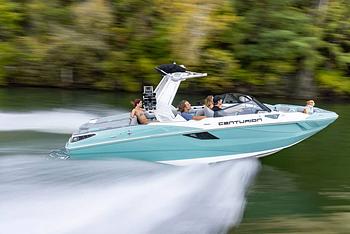
20th Mar 2024
Best Wakesurf Boat Brands
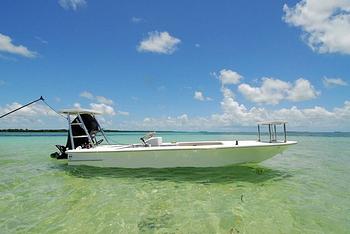
4th Mar 2024
The Best Flats Boats Brands, Special Boats for Skinny Waters
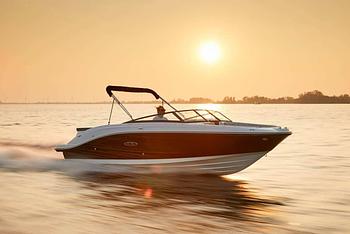
21st Feb 2024
Best Lake Boat Brands for Fishing, Cruising, and Watersports

15th Feb 2024
Best Aluminum Fishing Boat Brands: Tougher, Lighter and More Affordable
- Explore Rightboat
- Boats for Sale
- Boating Articles
- Buyers Guide
- About RightBoat
- Sell Your Boat
- Boat Selling Advice
Enter your email to keep up to date with the latest news
Join for free
Sign up now for free and discover how easy it is to keep up to date with THE latest boats for sale. Find your right boat, and tailor your voyage to finding your next boat.
Benefits of becoming a member:
- Set up tailored alerts
- Personalise your experience
- Download full specifications and broker details
- Keep tabs on your favourite boats
Are you a broker? Join as a Broker
Rightboat - join for free.
Do you have an account already? Login
Save this search
Save your search and receive new boats in your email..
You can unsubscribe from your alerts whenever you like. By pressing the button you accept the Legal Terms and conditions

IMAGES
COMMENTS
Welcome Sailors! THIS IS THE HOME OF WOOD SAILBOAT TILLERS. WE OFFER QUALITY TILLERS FOR MANY BOAT MODELS SUCH AS CATALINA, HUNTER, J-BOAT, PEARSON, AND MORE. CUSTOM TILLERS ARE ALSO AVAILABLE. OUR TILLERS ARE BEING USED AROUND THE WORLD BY ALL TYPES OF SAILING ENTHUSIASTS INCLUDING DAY SAILORS, LONG TRIP CRUISERS, AND COMPETITIVE RACERS.
At Rudder Craft we build every sailboat rudder with the singular focus of improving your sailboat's steering performance. In order to accomplish this our sailboat rudders incorporate a hydrofoil design, as a matter of course. Sailboats ranging from the West Wight Potter 15, all the way up to the MacGregor 36 and Catalina 42, will find a more ...
Opti Tiller Extension (Standard) Optiparts. $45.95. 1. 2. Sailing Tiller Extensions - Ronstan Battlesticks, Harken Aluminum tillers, Acme Black Diamond, Fatso Carbon tillers and more. Tillers from 30" to 54" in aluminum and carbon fiber. Free Shipping.
Gray Retaining Clip for Spinlock Tiller Extensions. $10.99. Compare. 1 - 24 of 26 Items. Load More. Shop the best selection of Tillers & Tillers Extensions from West Marine. Visit for products, prices, deals and more!
Keel Boat Upper Pintle. SKU: 27951 | Item ID: SCH 80-56. Special Order Only. 1-45 results of 64. Professionals and enthusiasts get their sailboat tillers and rudder hardware from Fisheries Supply. Browse products from top brands like Schaefer Marine, Forespar, and more.
Common to faerings (double-ended Scandinavian workboats), the Norwegian tiller traces its ancestry to the Vikings, and has been used for ages. It consists of the transverse tiller, an extension that reaches forward, and a flexible or articulated connection between the two. The connection can be simple or complex, anything from a rope with a ...
Despite the proliferation of wheel-steering for small sailboats, the traditional tiller is making a comeback. Tillers always have been the choice for small-boat racing, catboats and multihulls. But now, tillers are found on the popular J-Boats, the vigorously-raced Mumm 36s, the big round-the-world single-handed racers like Cray Valley and many ...
Minn Kota Cable/Handle - 1854125. $61.99. Shop Tillers for boats of all types at Defender. Get fast delivery and free shipping on eligible orders over $99.
From Issue September 2020. Boats perform best floating at their designed waterlines. Many small sailing boats force you to sit at the tiller with your weight too far aft for proper trim, and the tiller can't be reached if you want to sit to windward. If the bow is aimed at the sky, out of the water, you lose waterline length and sail slower.
Short answer sailboat tiller: A sailboat tiller is a lever used to steer a sailboat by connecting it to the rudder. It allows the sailor to control the direction of the boat by manipulating the position of the tiller. ... Instead, focus on making small adjustments by gently moving the tiller left or right. Subtle inputs allow for better control ...
Cover the hose clamps with athletic tape to prevent scratching. Slide the webbing loop onto the tiller and tape it in place with 1½-inch athletic tape (see photo 3). The webbing will stretch for a snug fit. Cut the extension to the proposed length, leaving it a little long to start.
In part eighteen of this series on how to build a wooden Snipe class sailboat I show how to make a tiller and tiller extension for the rudder. I mill the rou...
Small catamarans; Rotomolded boats; Trailerable sailboats; Explore All Sailboat Types Boats with Tiller Steering. Steering by tiller (rather than a wheel) can make a difference when learning. Tillers are directly connected to the rudder that manages the boat's direction. Tillers provide quick feedback about the strength and direction of the ...
Christopher Cunningham. A push-pull tiller requires a different kind of keeper than one for a conventional tiller. S olo sailors of small open boats have a problem: While we're sailing we're stuck minding the helm. Occasionally there's a need to go forward to adjust the downhaul or centerboard, use both hands to steady the binoculars, change a setting on the GPS, or eat lunch.
The tiller is a lever that you use to turn the rudder to steer a boat. On many power and sailboats, the rudder (s) are out of sight beneath the hull. For this type of design, the tiller is fitted to a post. The post is attached to the rudder, and it is fitted under the boat. When steering with a tiller, it is moved opposite of the direction you ...
When the wind blows against the sails, it can cause your boat to tilt in their direction. Your body weight will counter the tilting effect and keep the boat level. Using The Tiller. The sailboat is equipped with a rudder. As your boat picks up speed, you can use the rudder to steer the boat. A little tiller usually controls the rudder.
In December 2019 I decided to buy John Owens' business of making rudders, daggerboards and tillers for several production boats. I always found that these were some of my favorite parts to make during a boat build. The foil is such an intimate part to the performance of the boat and making one that water would flow smoothly over fascinated me.
6 - Catalina 25 and Catalina 27. Dinghy sailing isn't for everyone. Some people are more interested in a cruising boat they can go places with and stay over night. If that is you then a Catalina 25 or 27 is a great choice. Catalina 25 and Catalina 27s are 2 of the most common small cruising keelboats out there.
Catalina 16.5. jlodrummer. Catalina Yachts are synonymous with bigger boats but they have some great and smaller boats too such as Catalina 16.5. This is one of the best small sailboats that are ideal for family outings given that it has a big and roomy cockpit, as well as a large storage locker.
The tiller tender requires only a short line run across the boat under the tiller an toggled bungee loop to squeeze that line to the tiller. Next, take a short bungee loop with a plastic ball on the end and pass the looped end around both the tiller and the loop you just rigged. Take enough turns with the bungee around both the tiller and the ...
The Garmin Ghc 20 Marine Autopilot Helm Control is your best sailboat autopilot for these types of adventure. This amazing autopilot is designed with a 4-inch display that can improve your nighttime readability. This display is glass-bonded and comes with an anti-glare lens that is essential in preventing fog and glare in sunny conditions.
The Pardeys are icons of small sailboat cruising. Having sailed over 200,000 nautical miles and circumnavigated both east and westbound on their home-built, engine-free, sub-30-feet cutters, they are among the most recognized sailors in the world. They're also known as "America's first couple of cruising.".
The Best Sailboats Under 25 Feet. Pocket cruiser: Cornish Crabber 24. British manufacturer Cornish Crabber has been producing beautiful, traditional style small sailboats for decades, ensuring they honor their heritage both in the construction style and appearance of their boats. The Cornish Crabber 24 is the most iconic of their range and ...